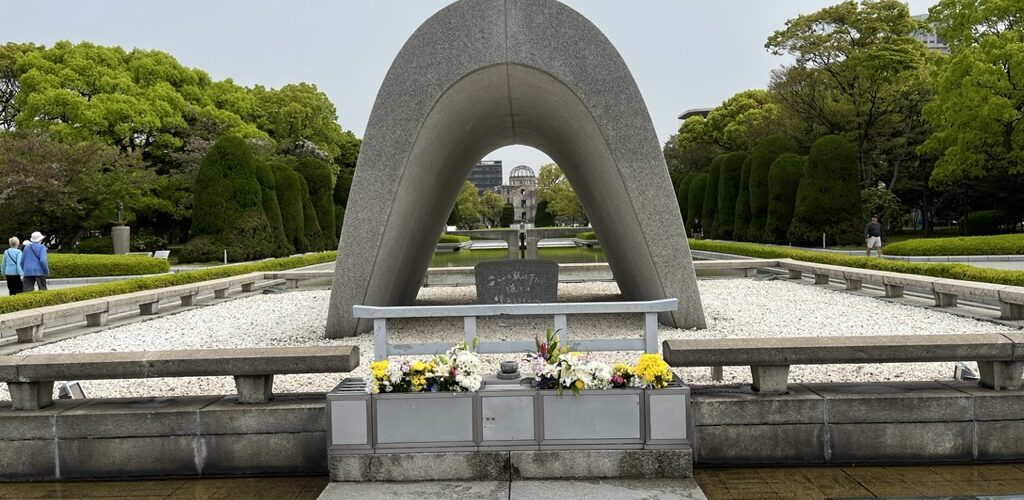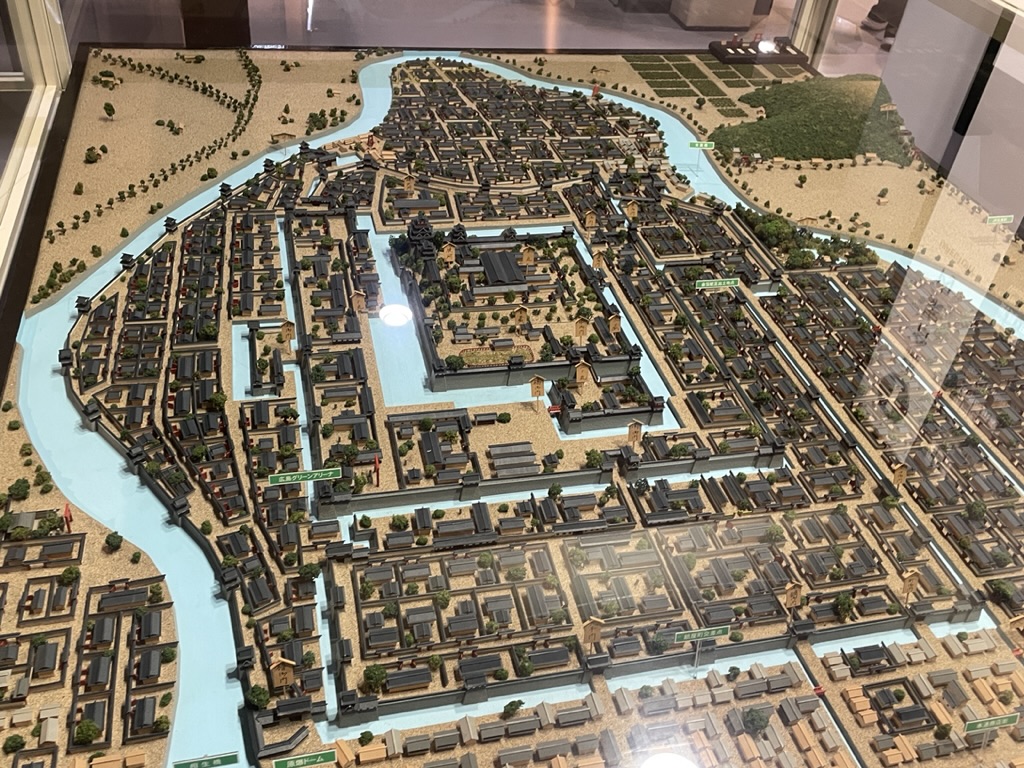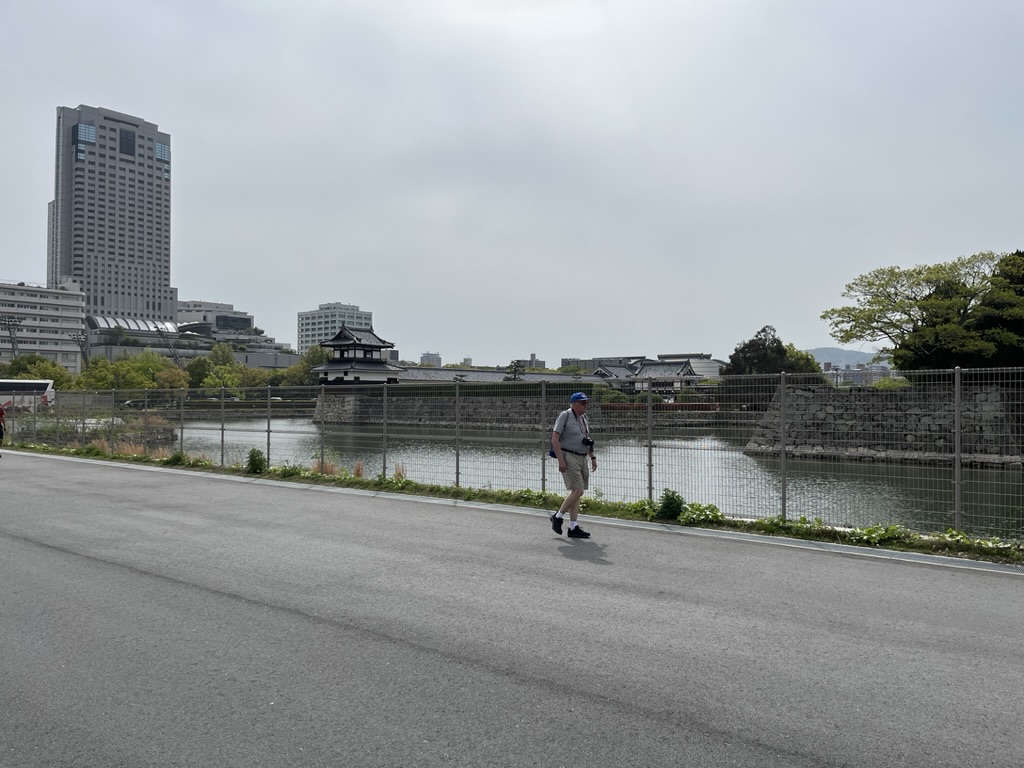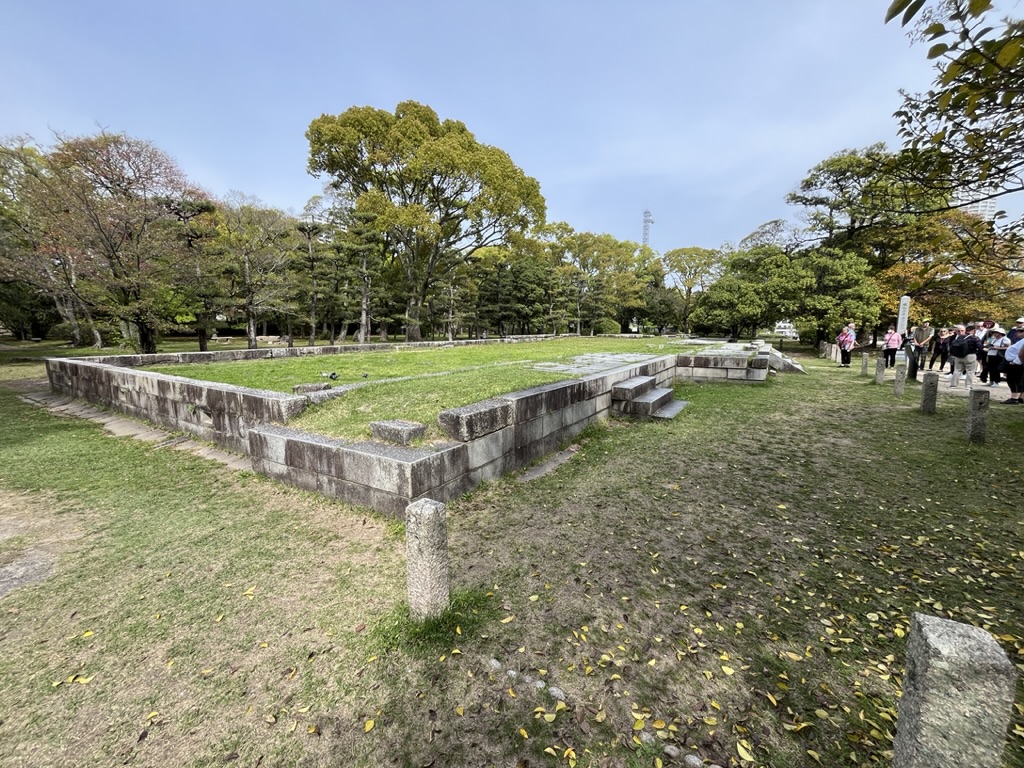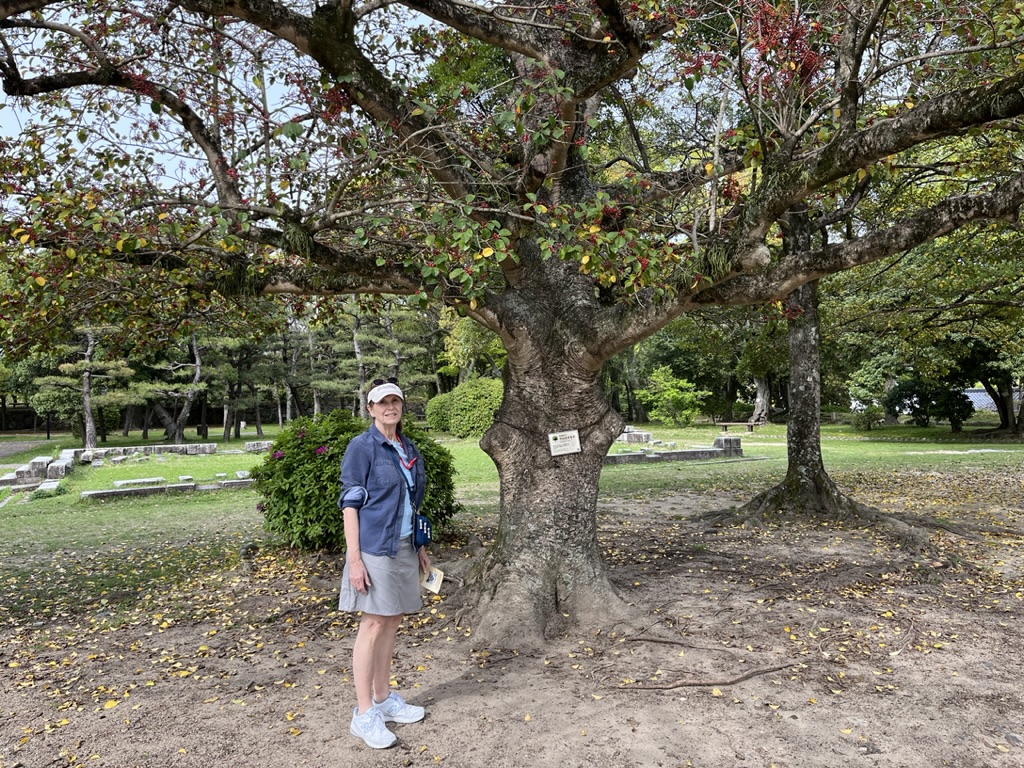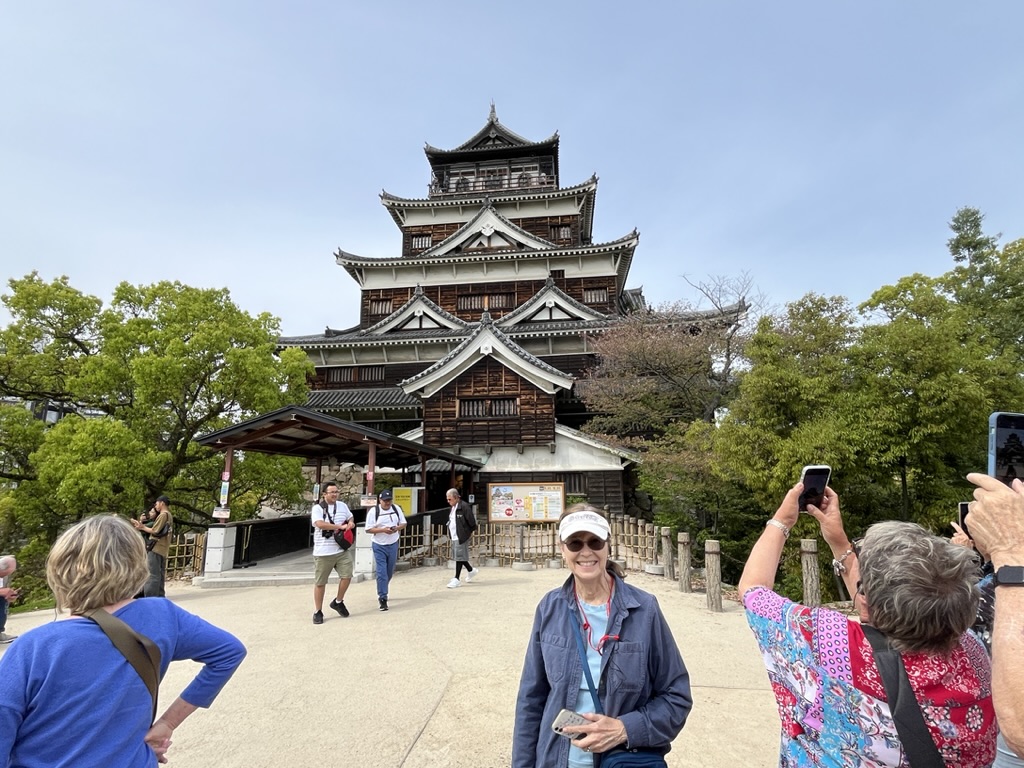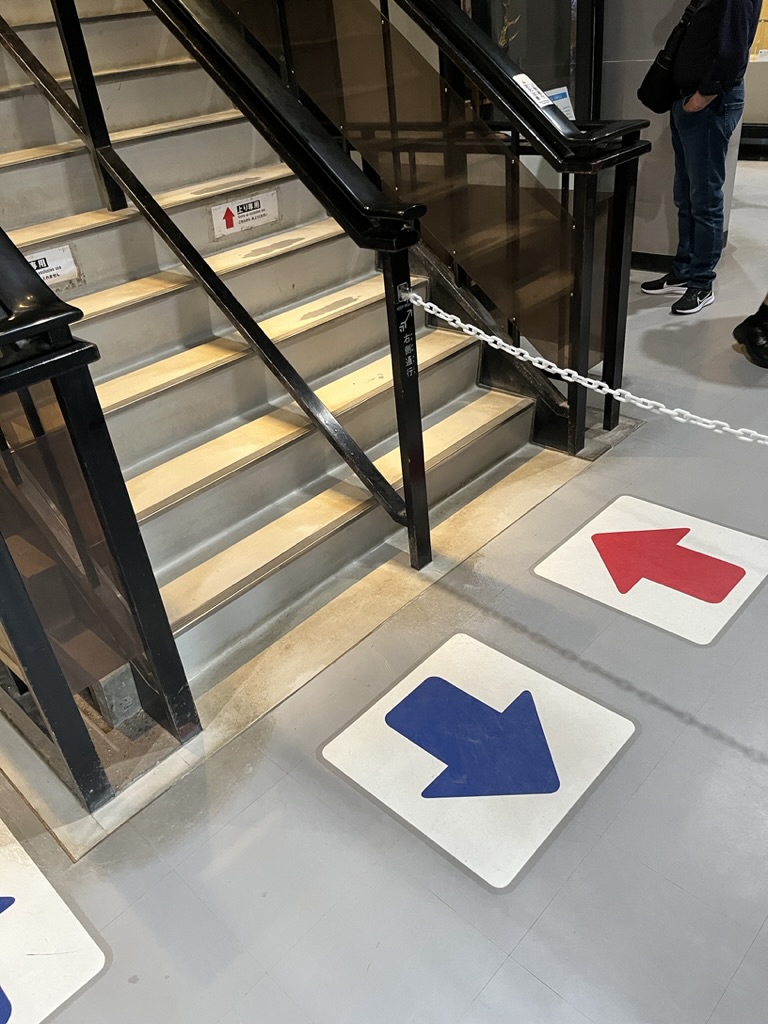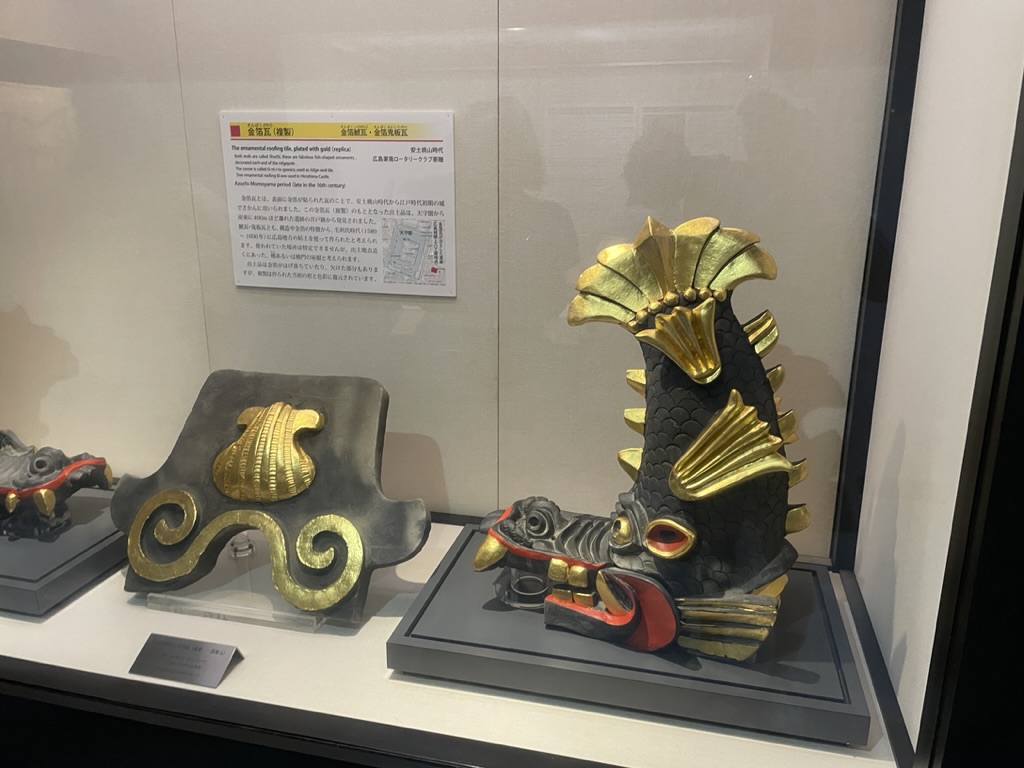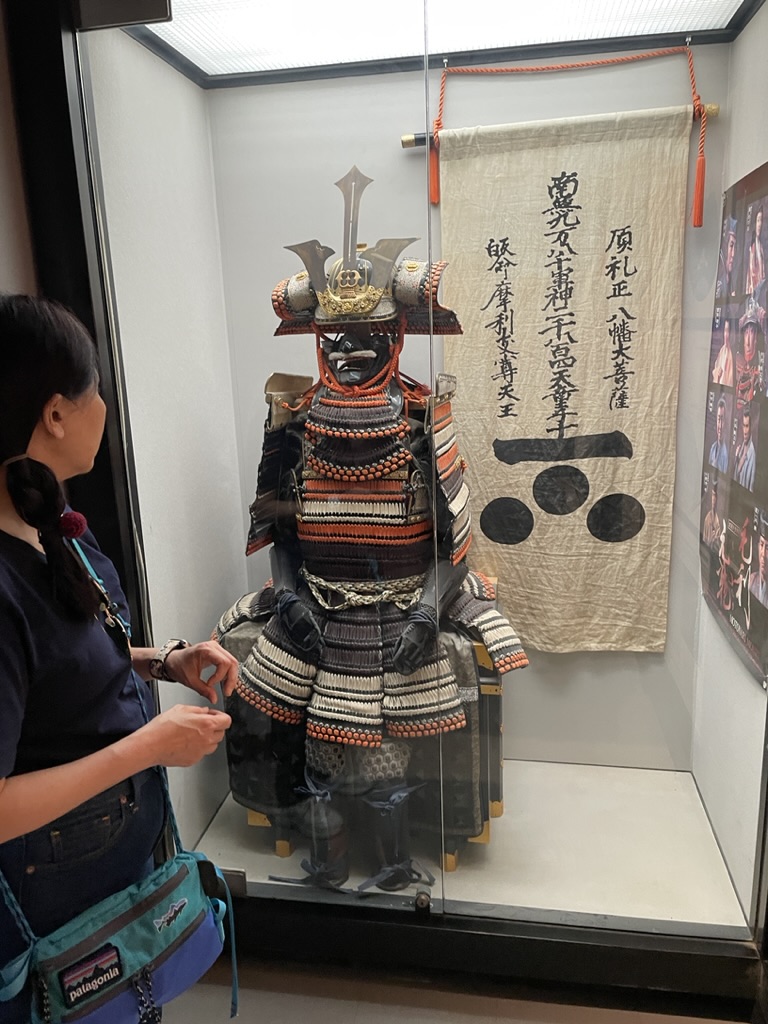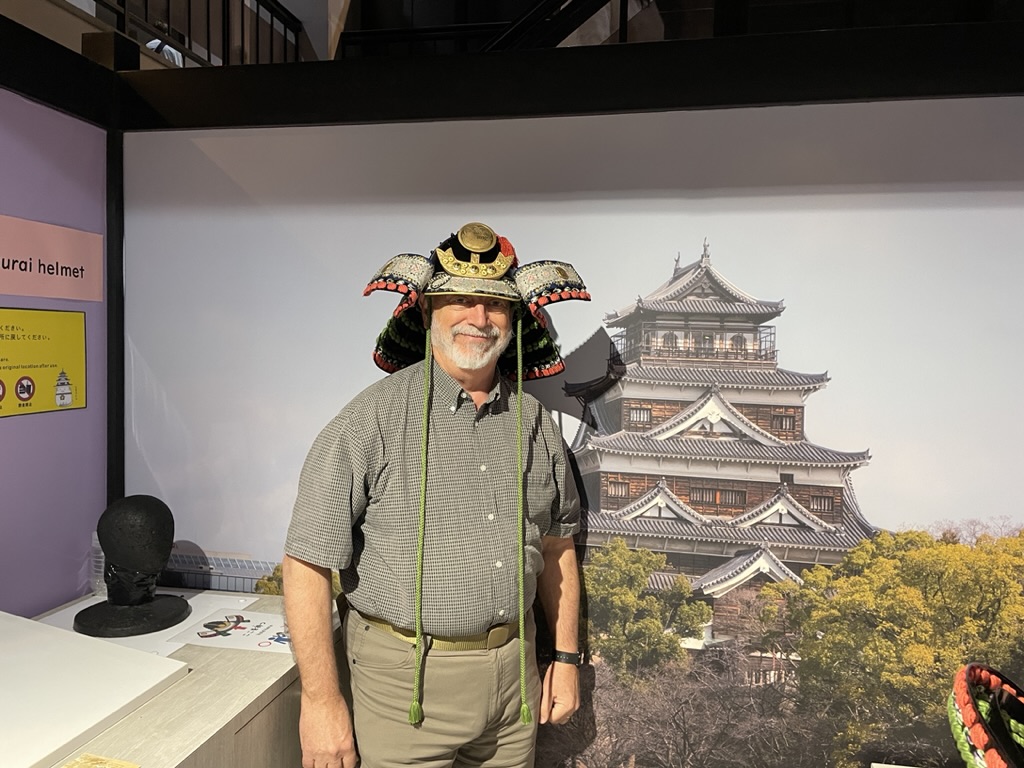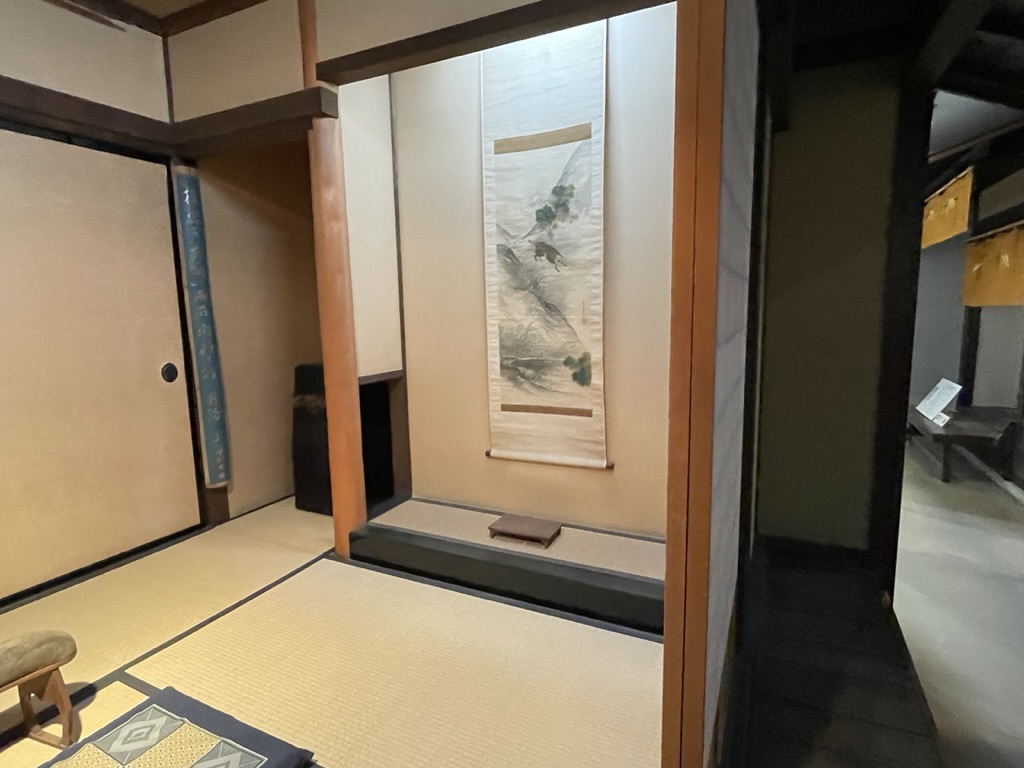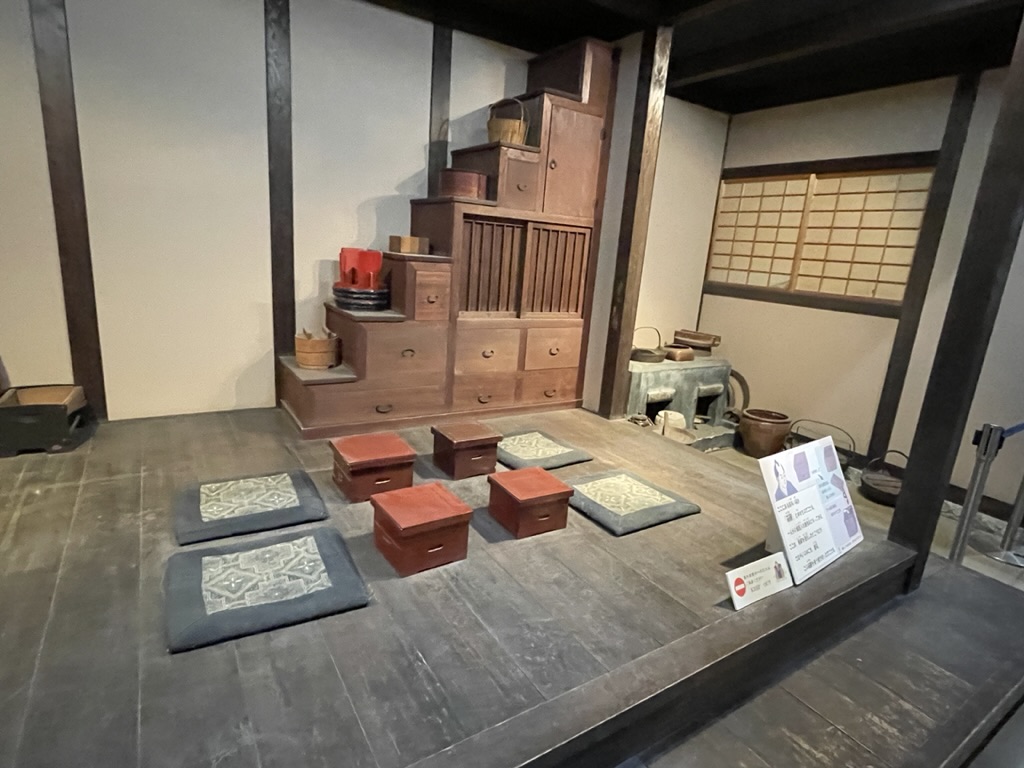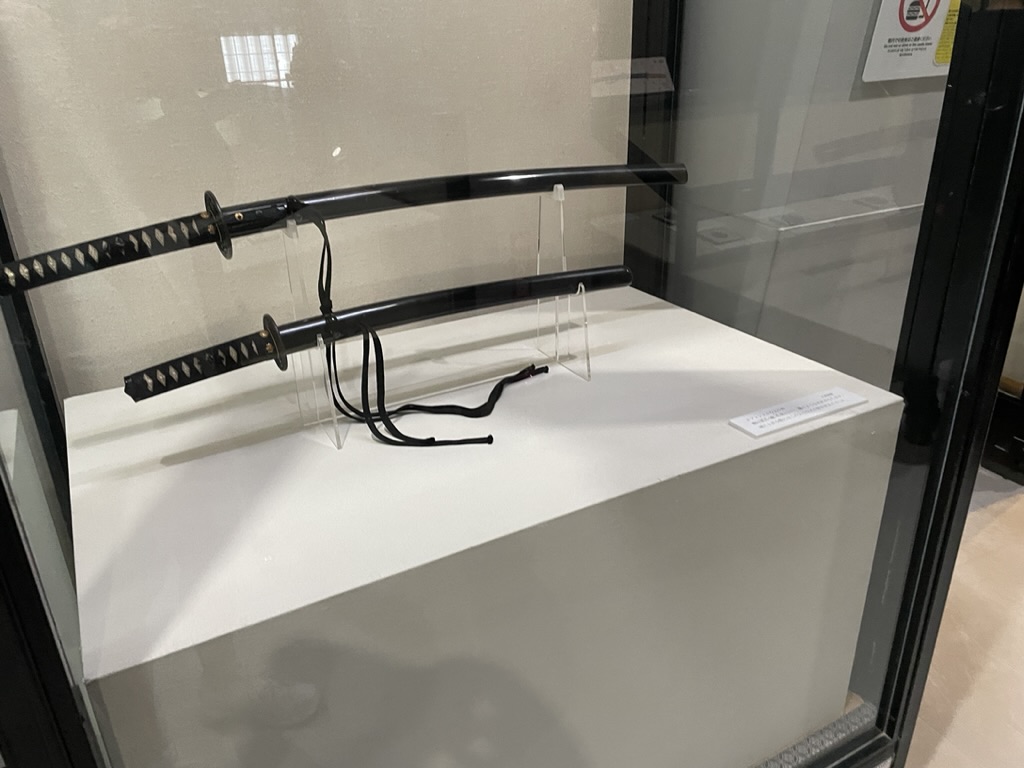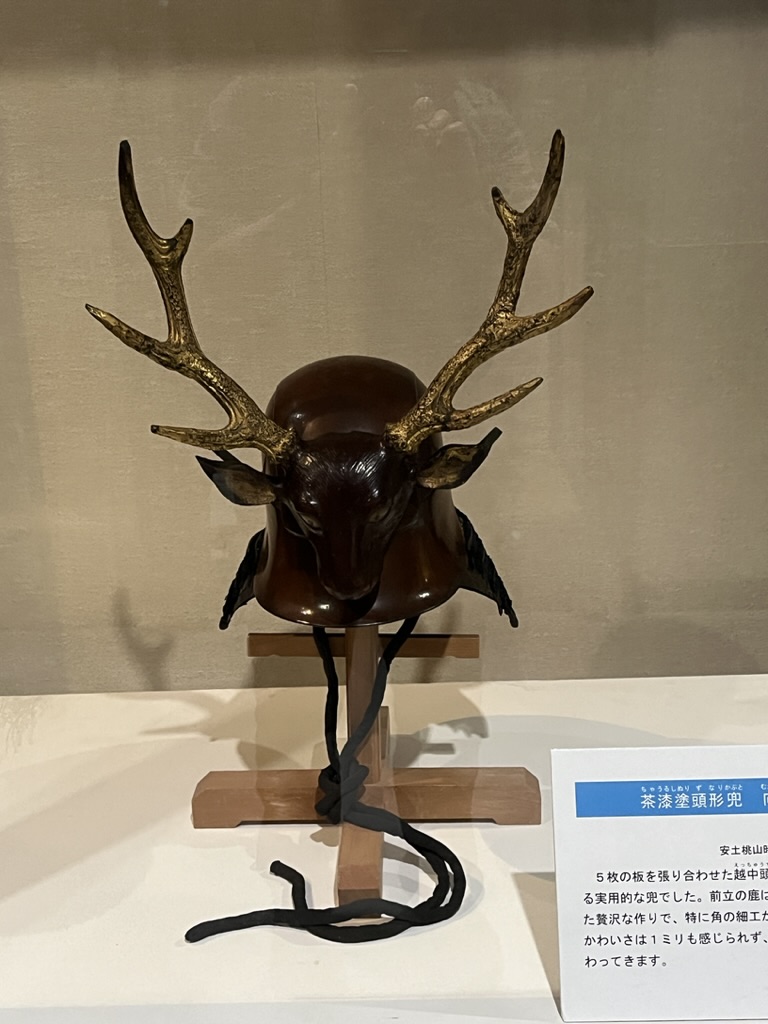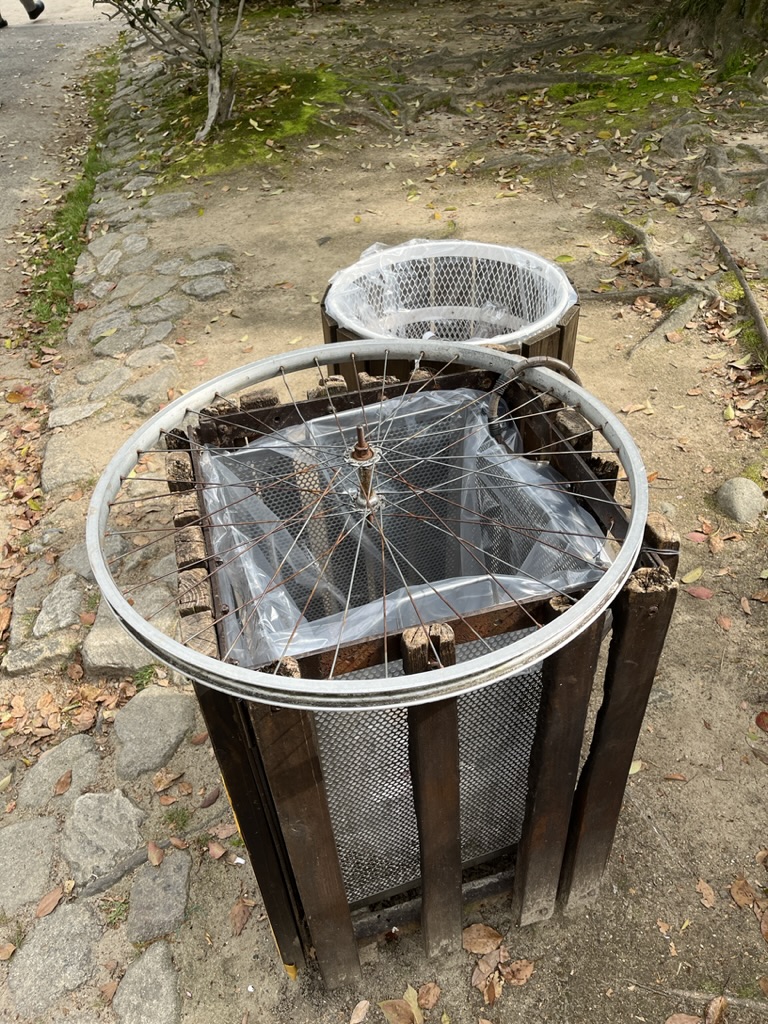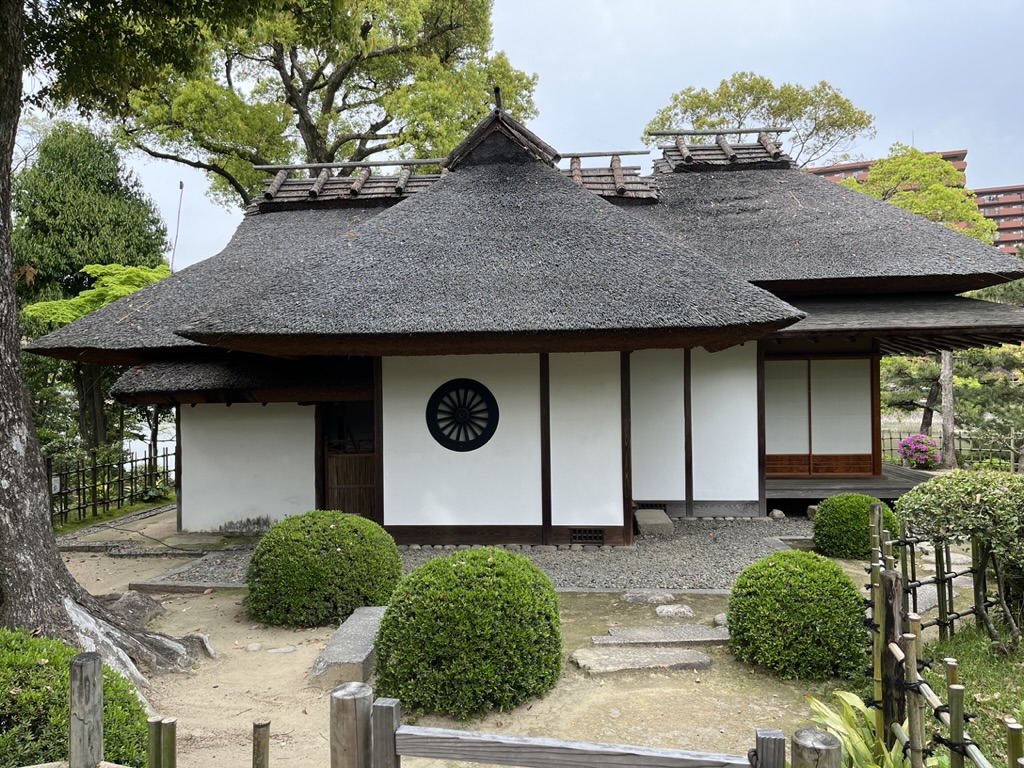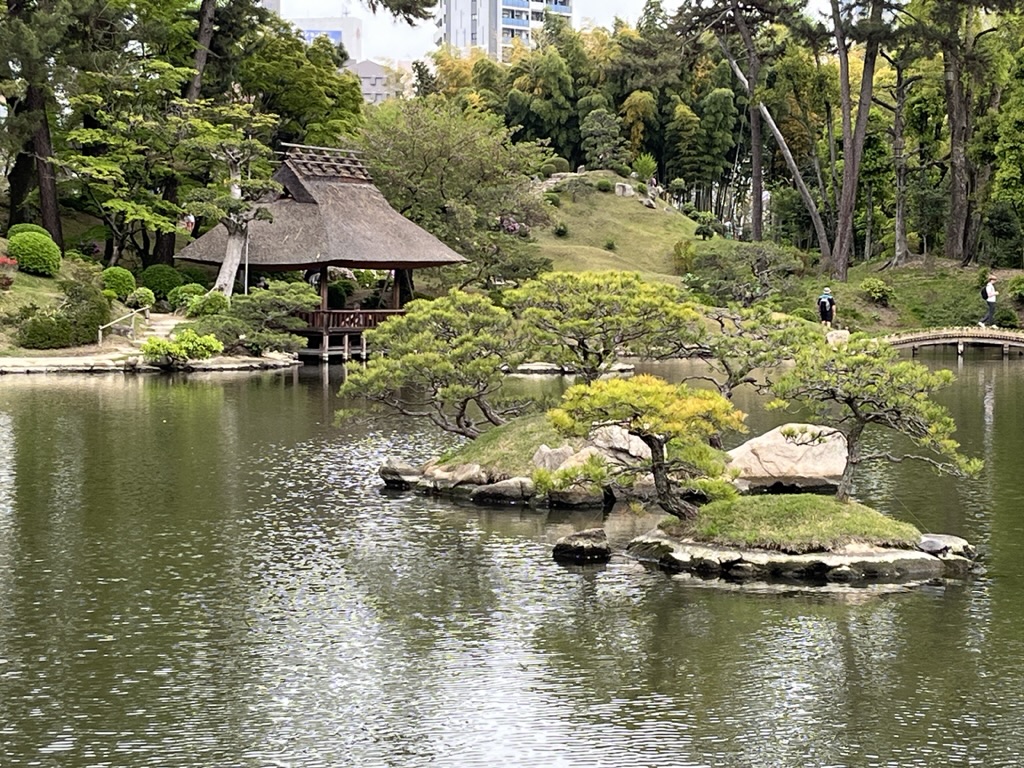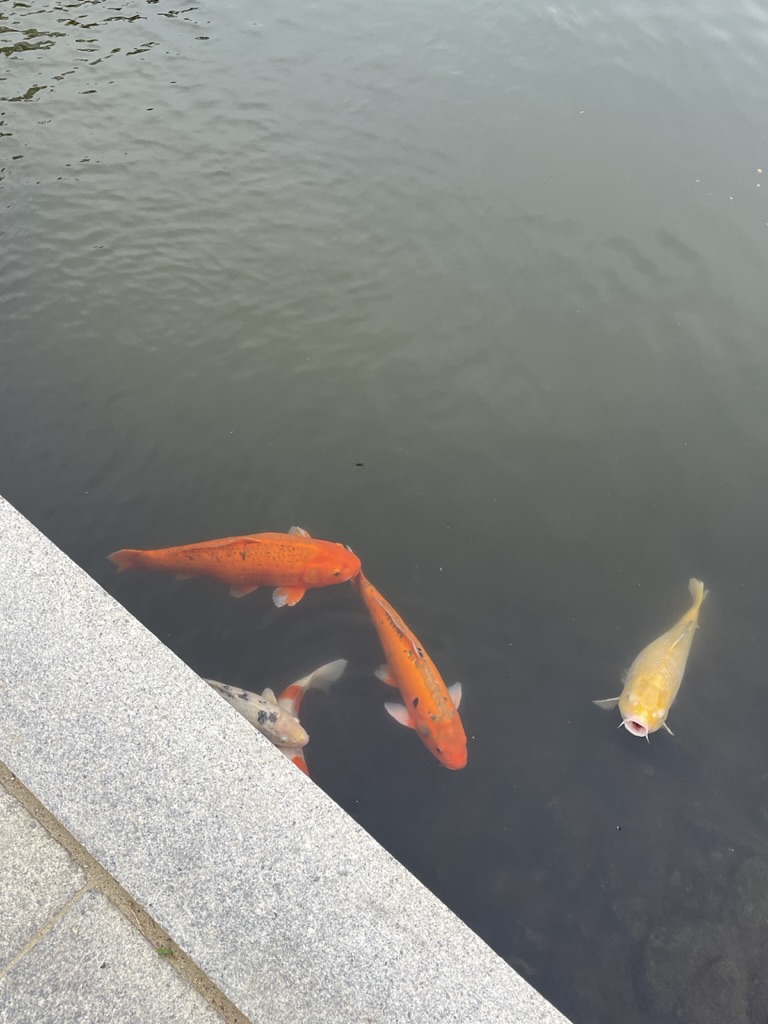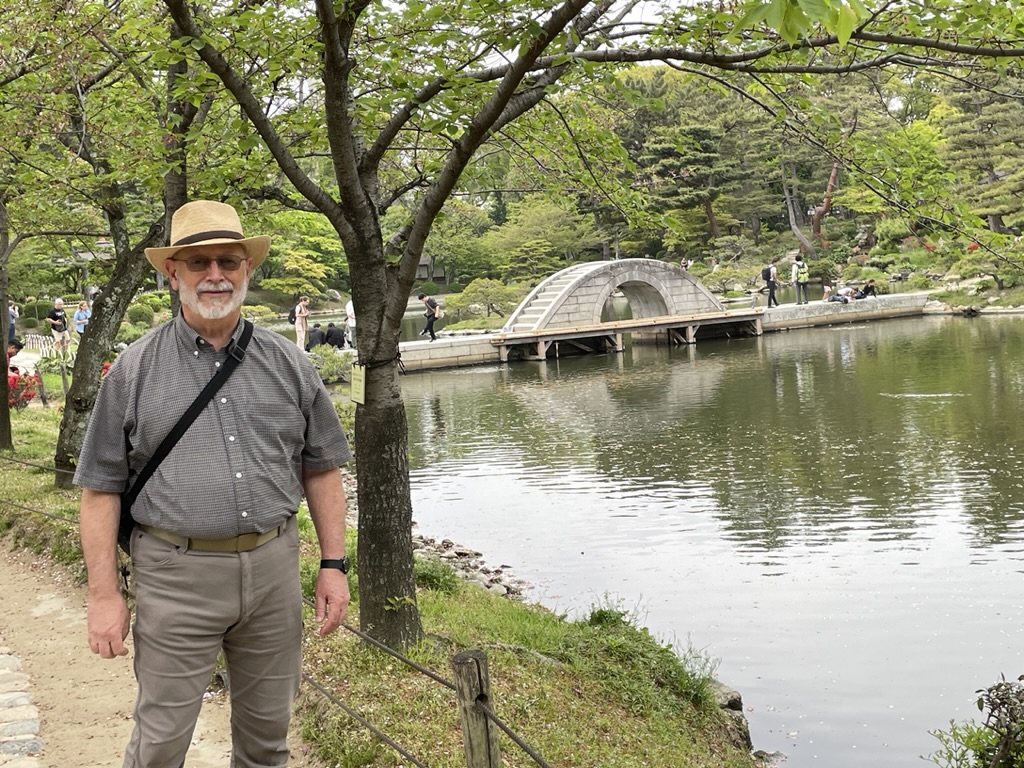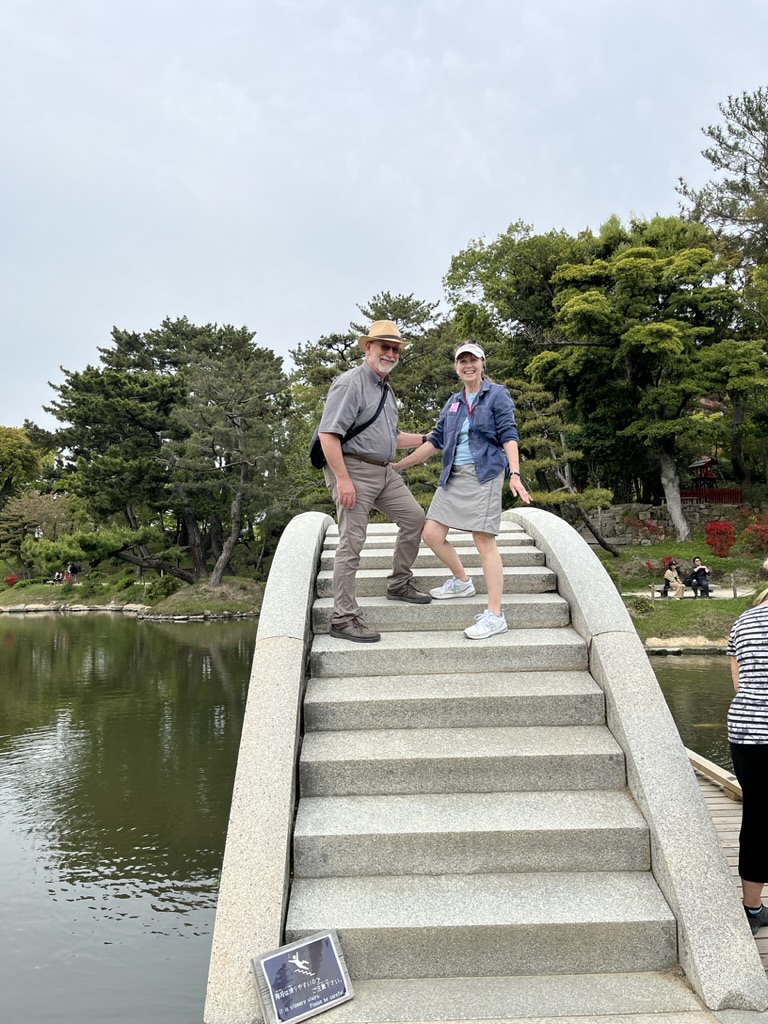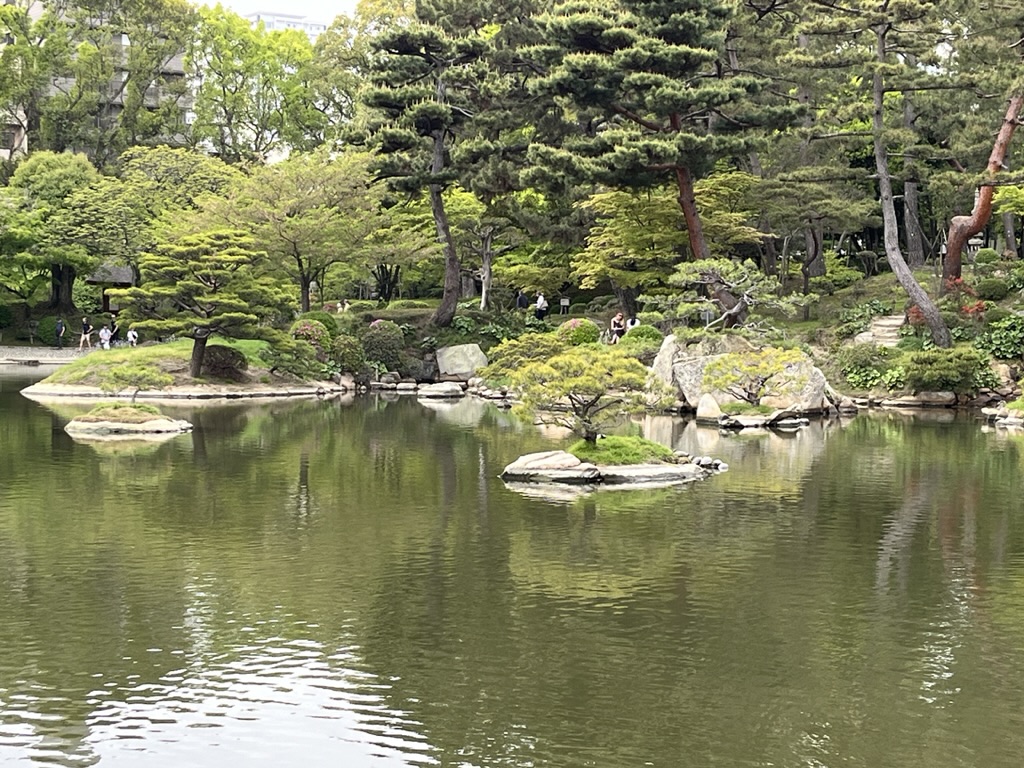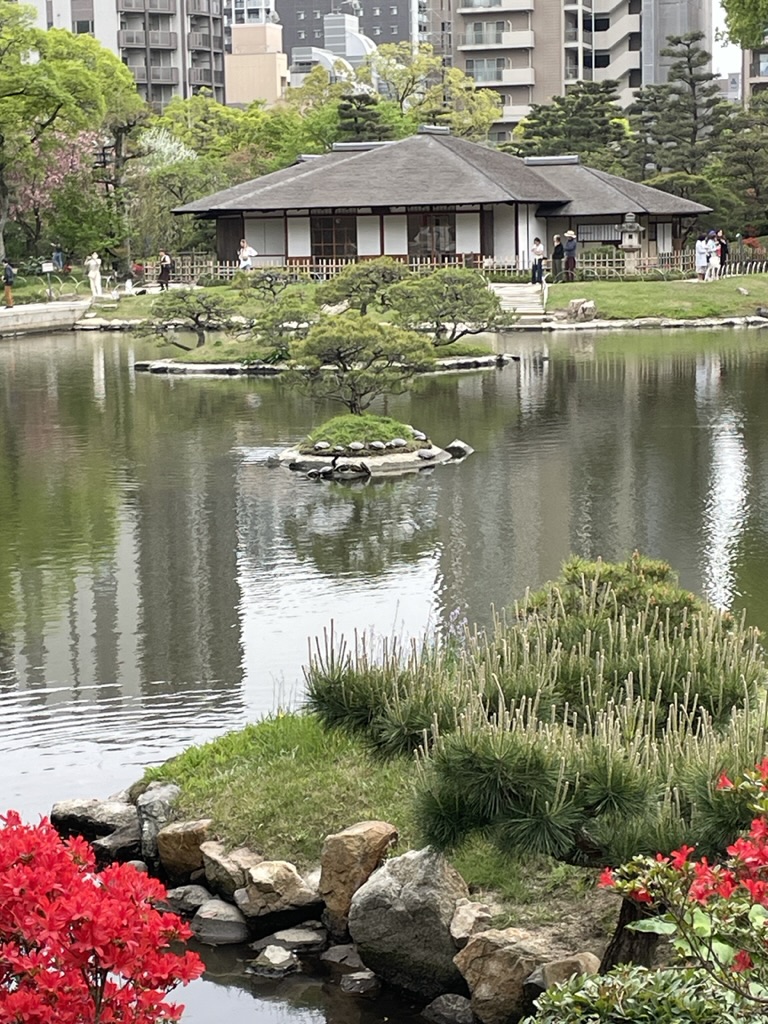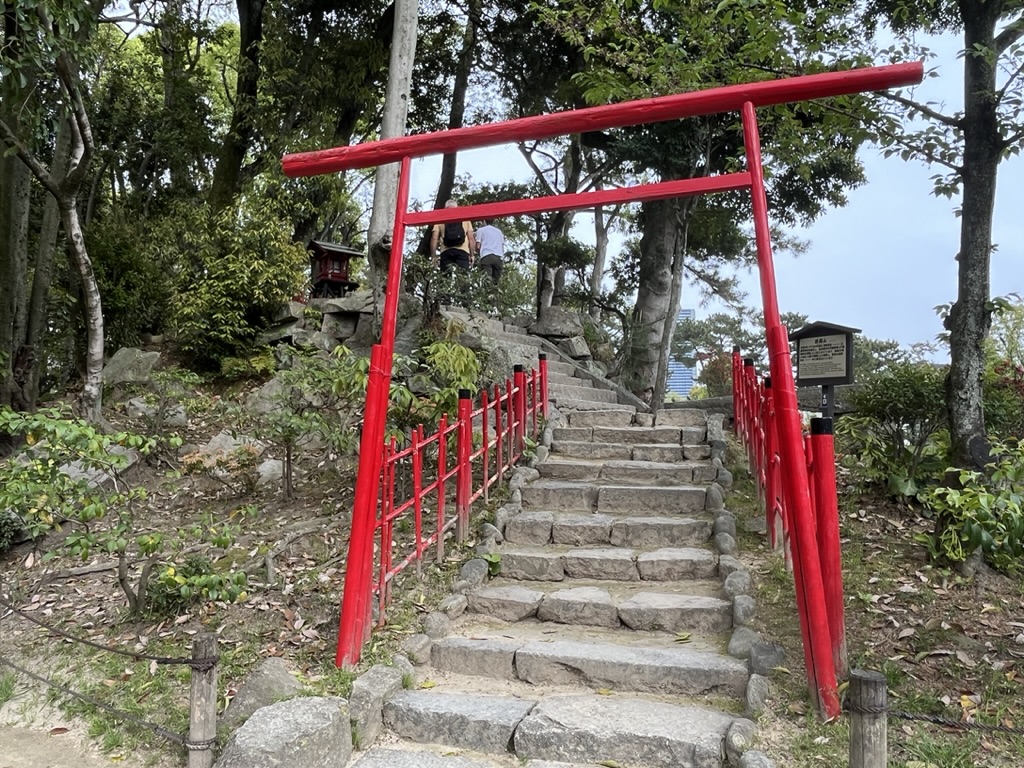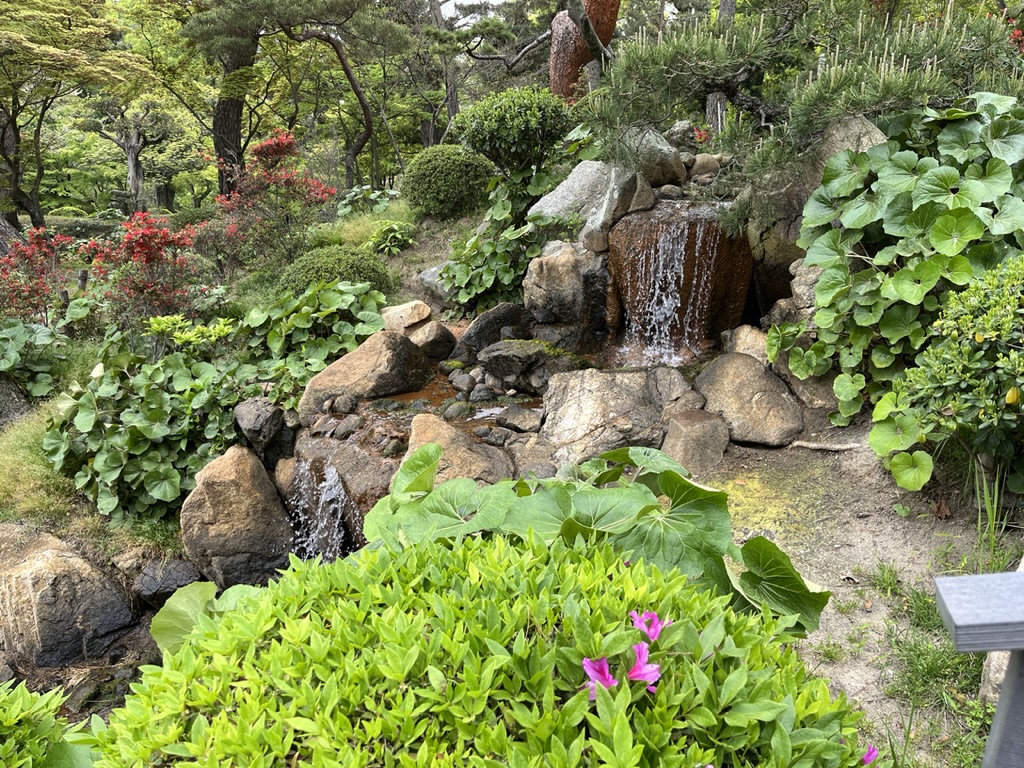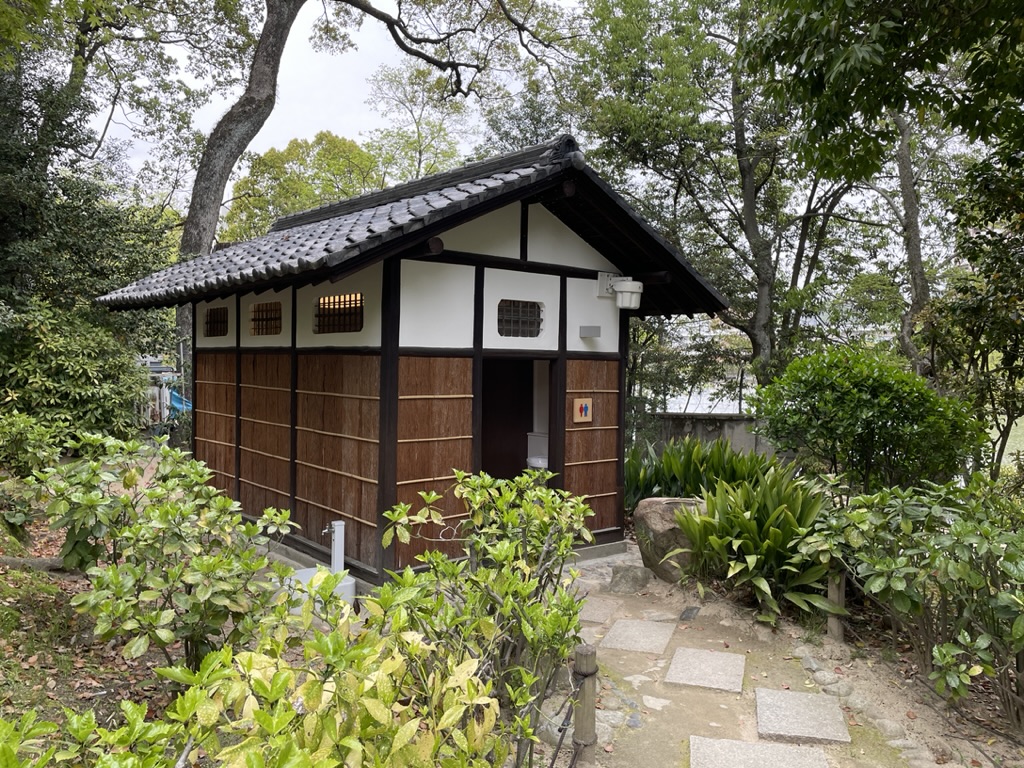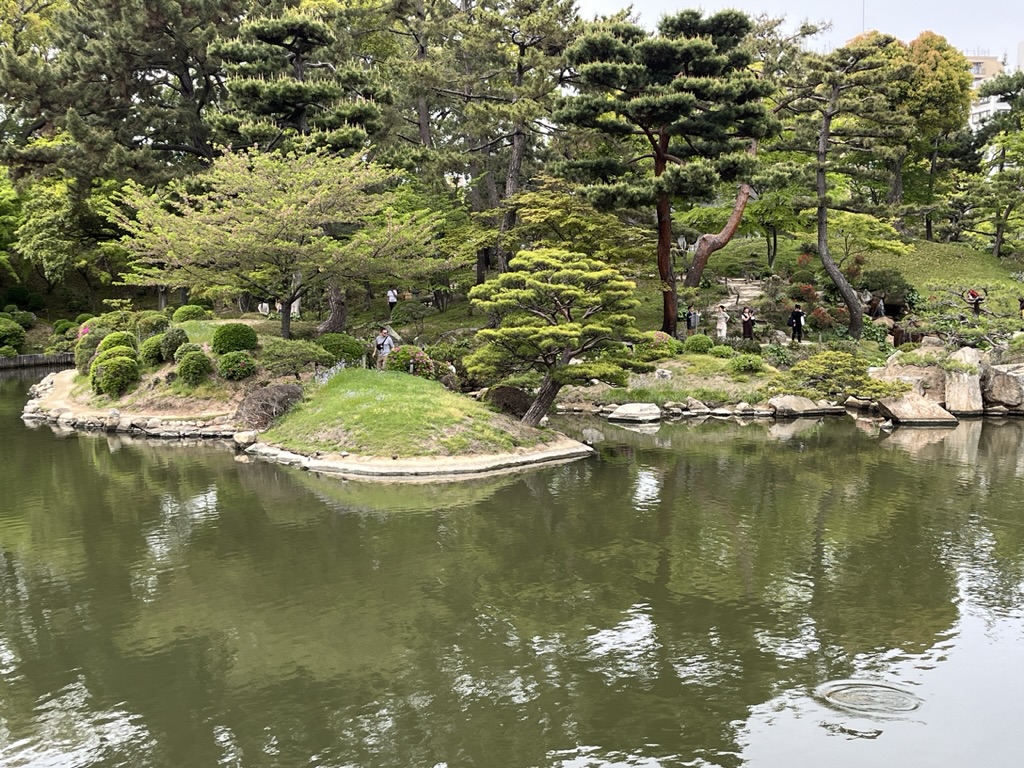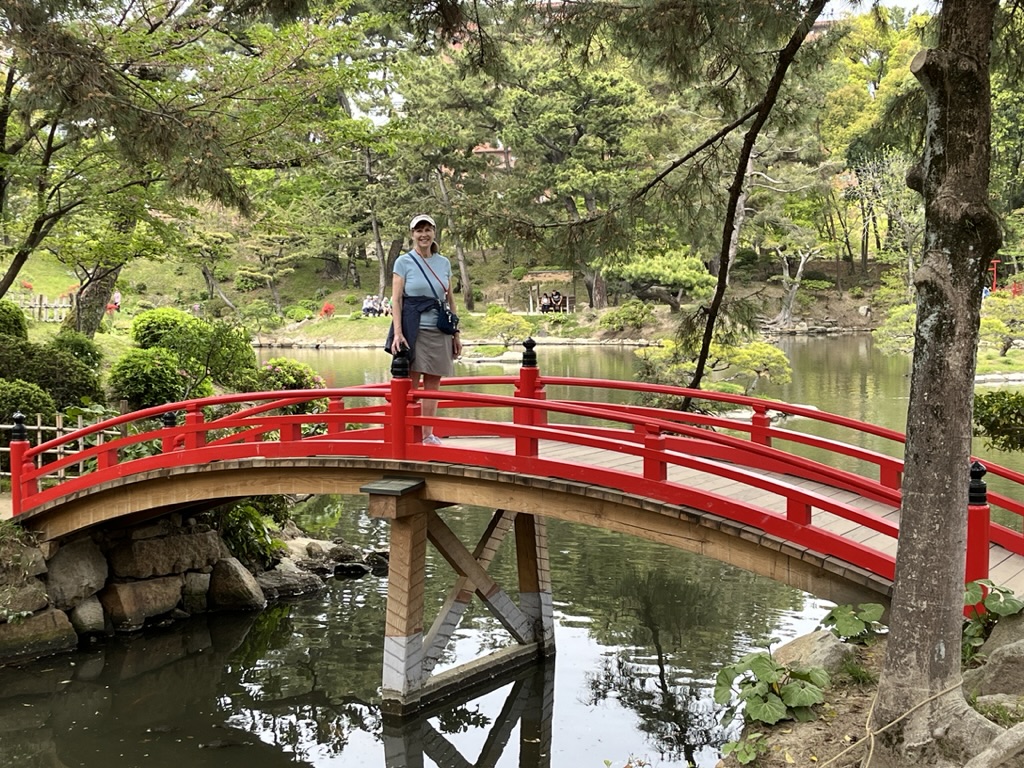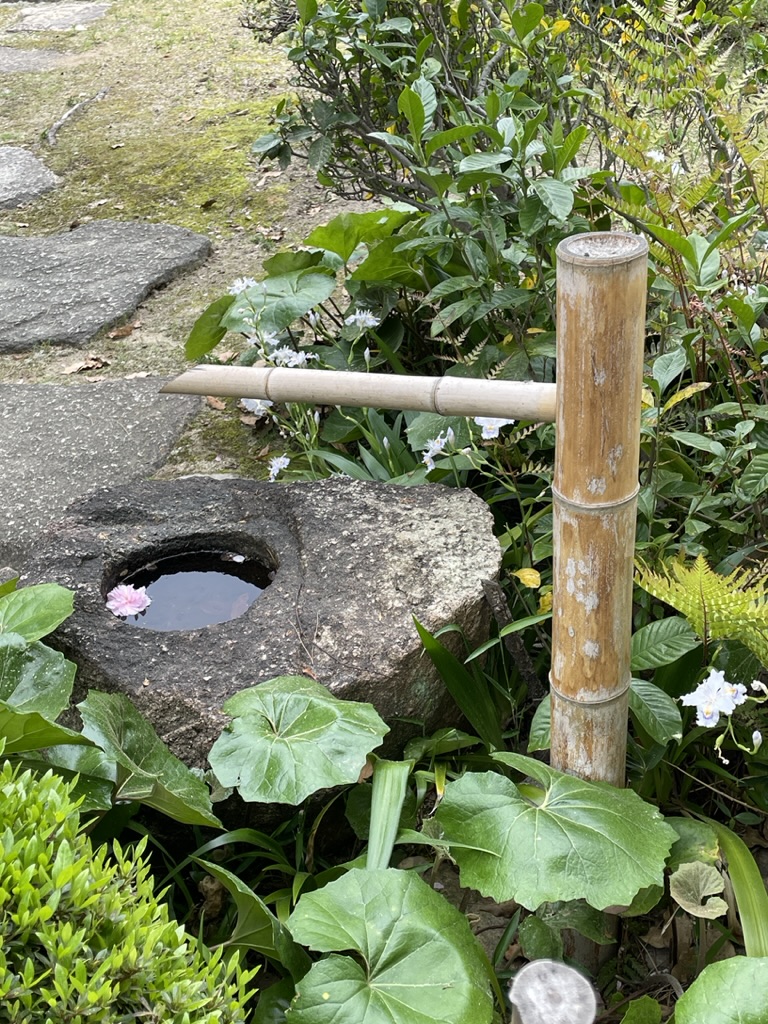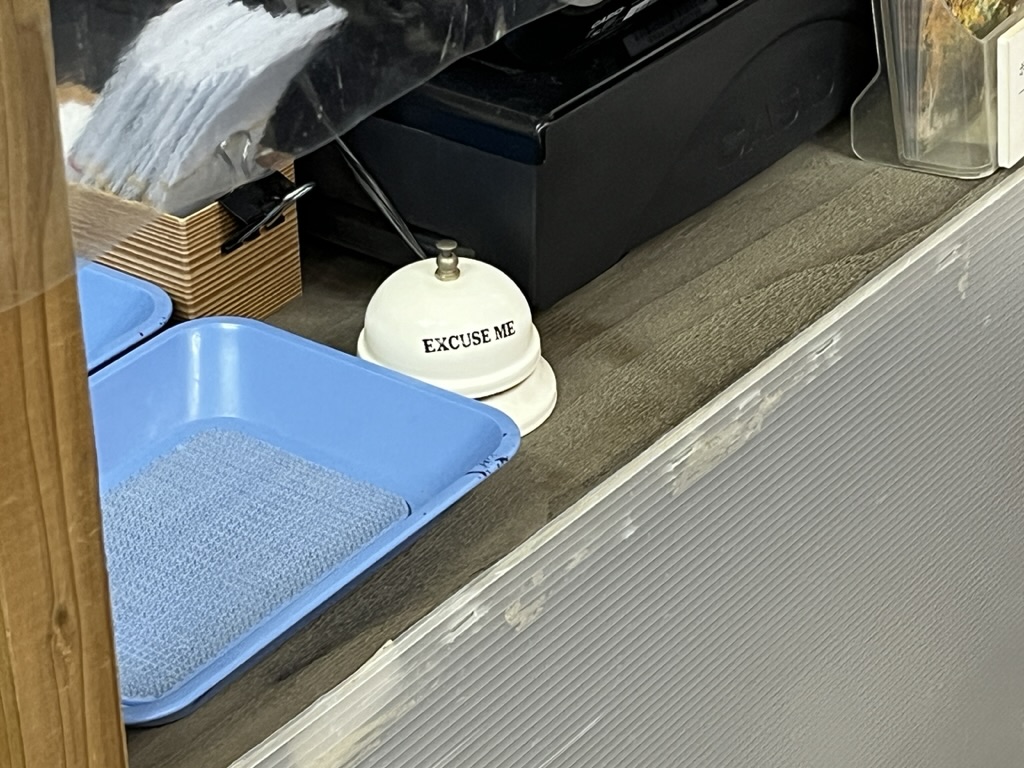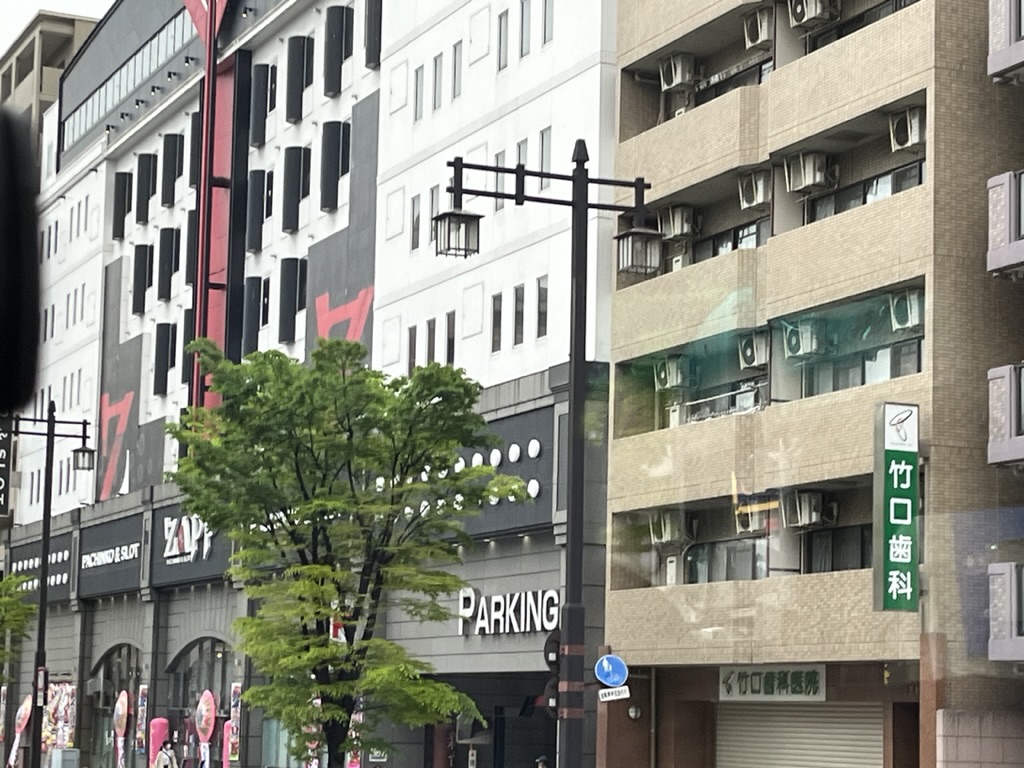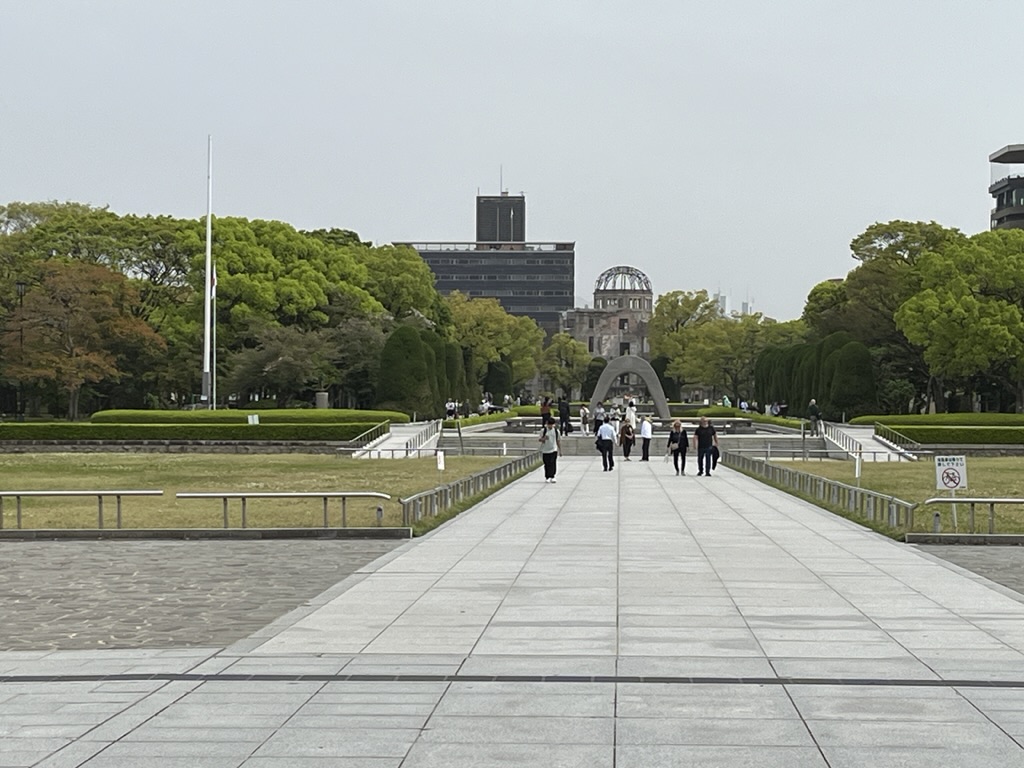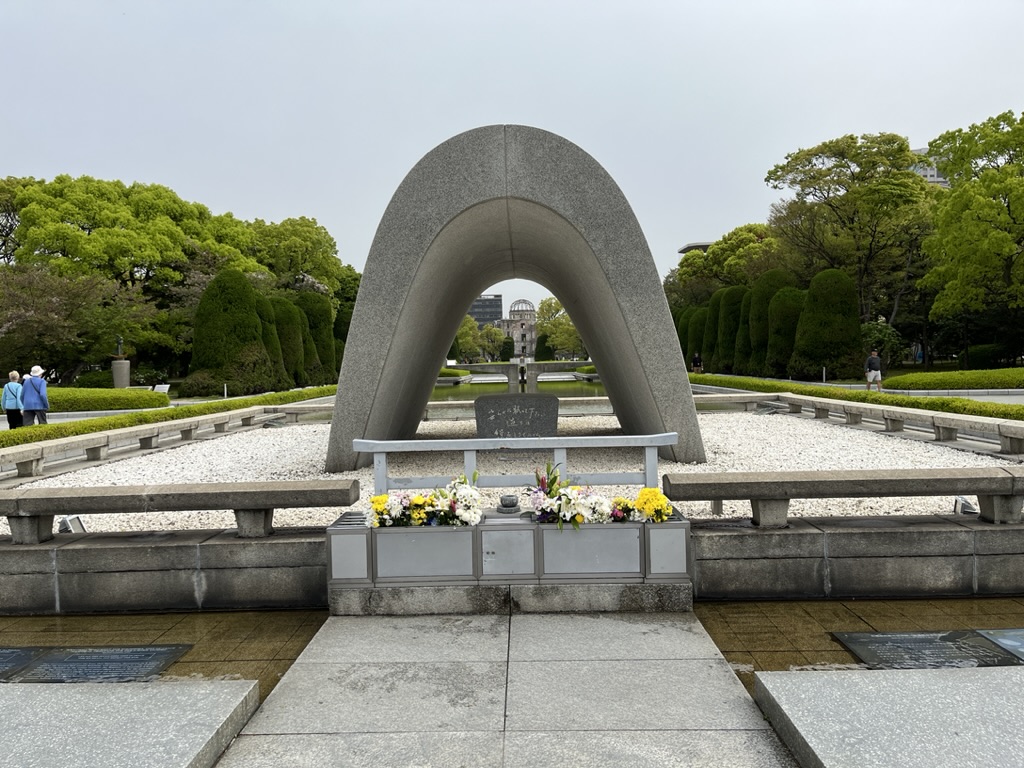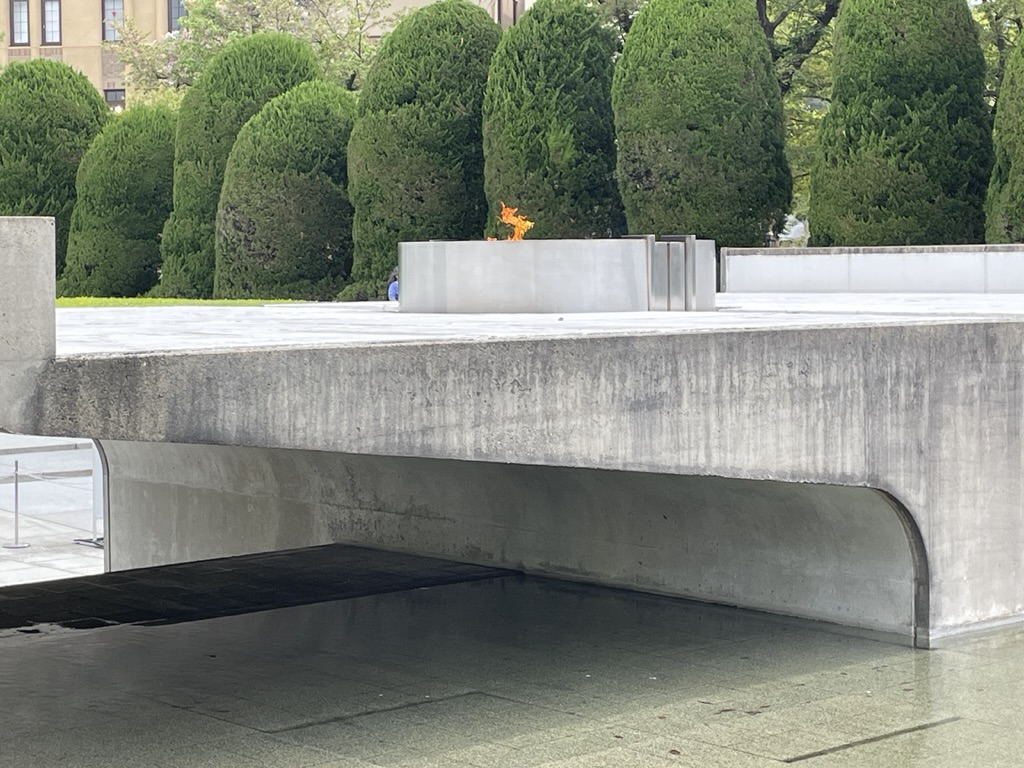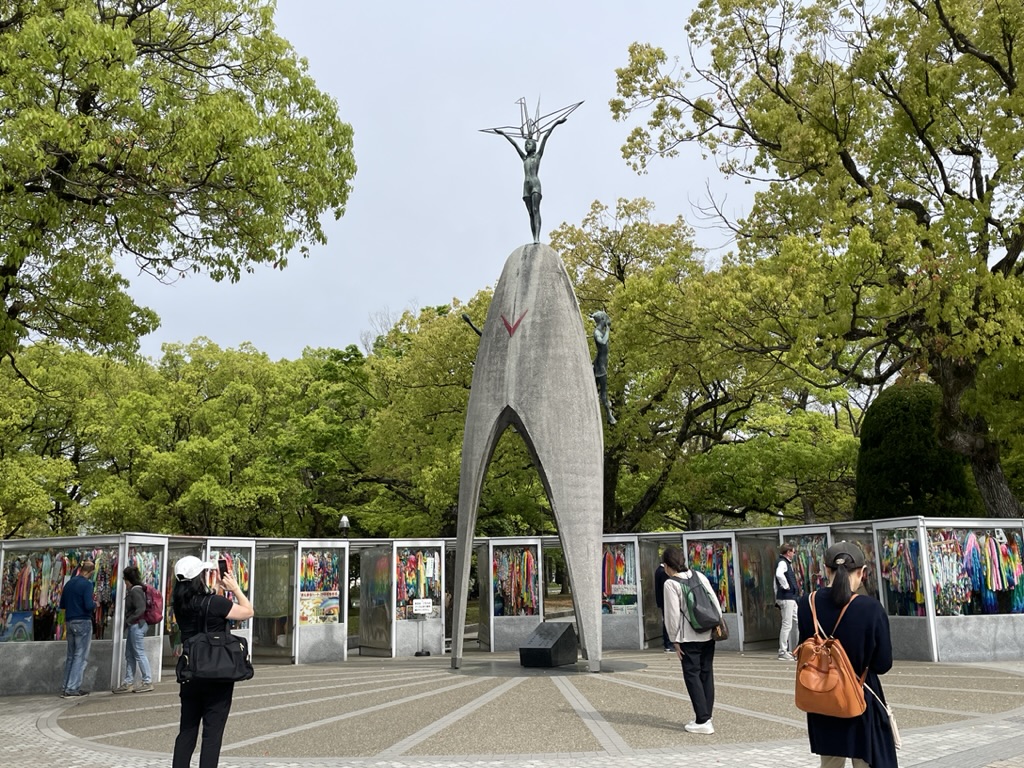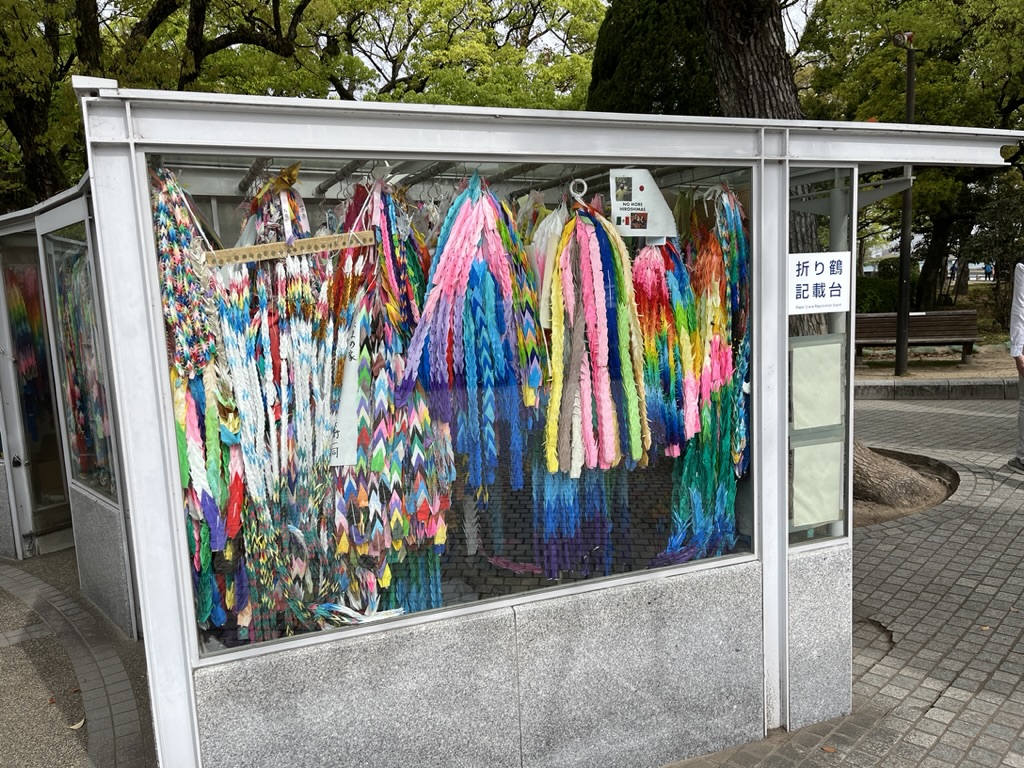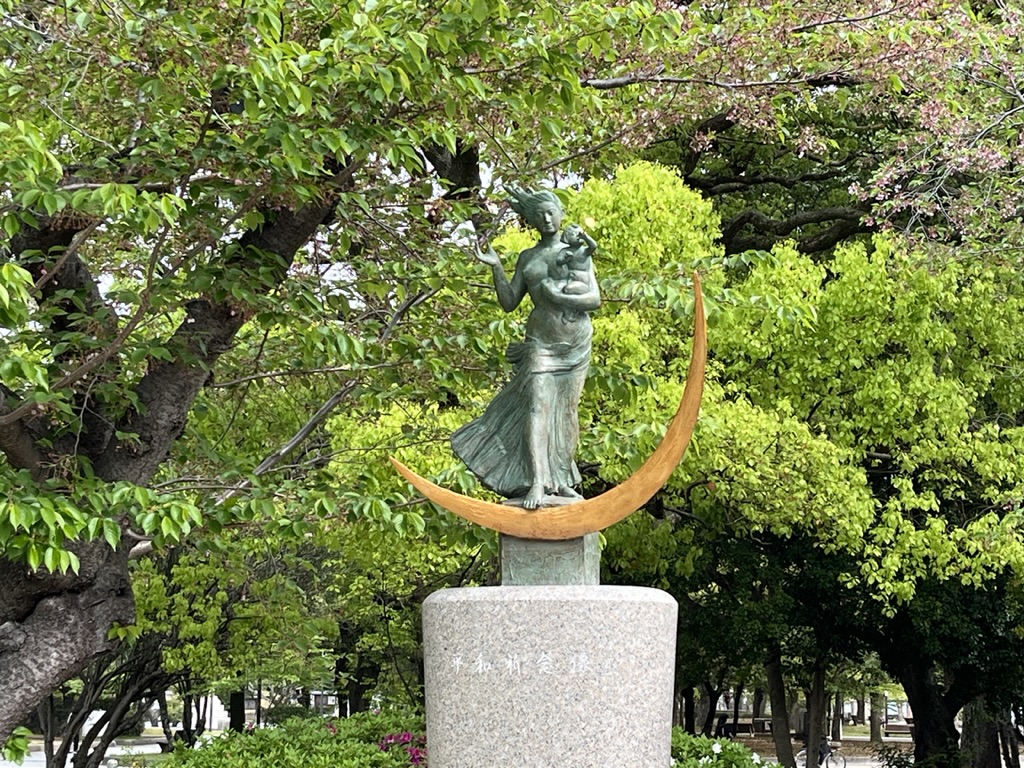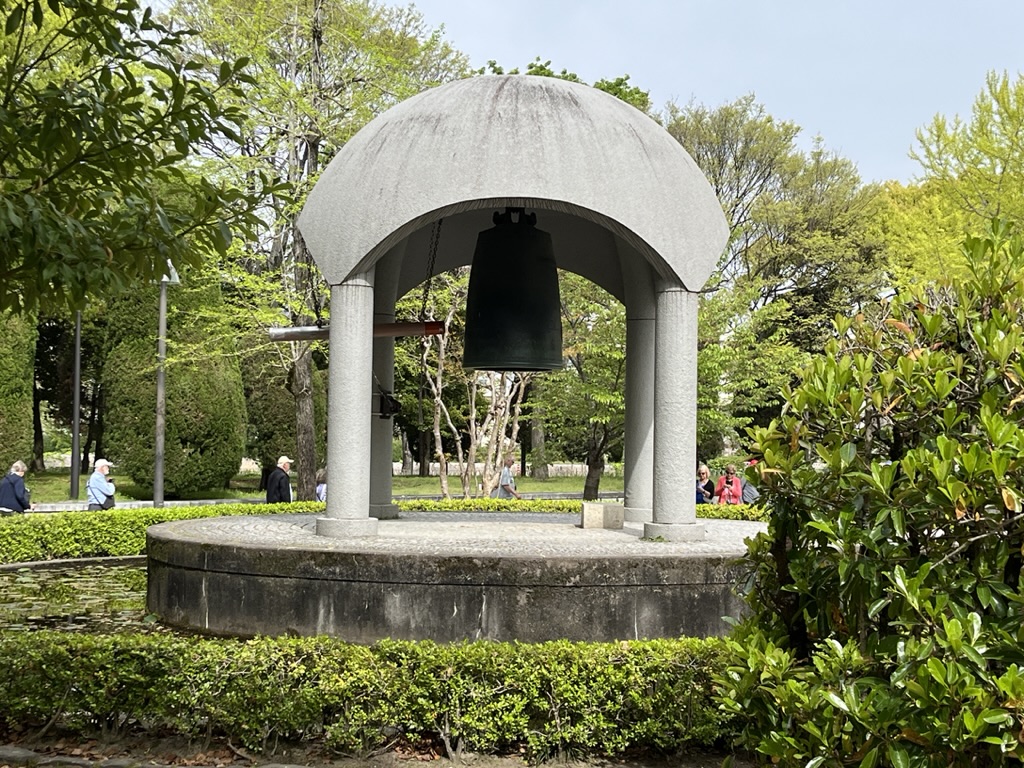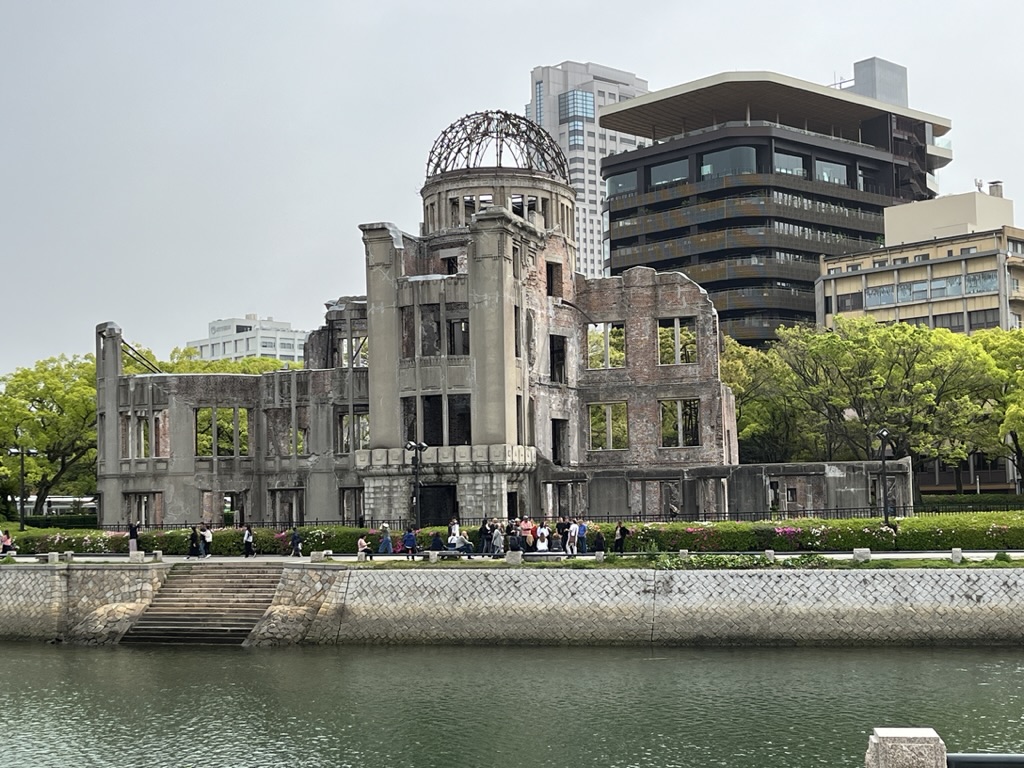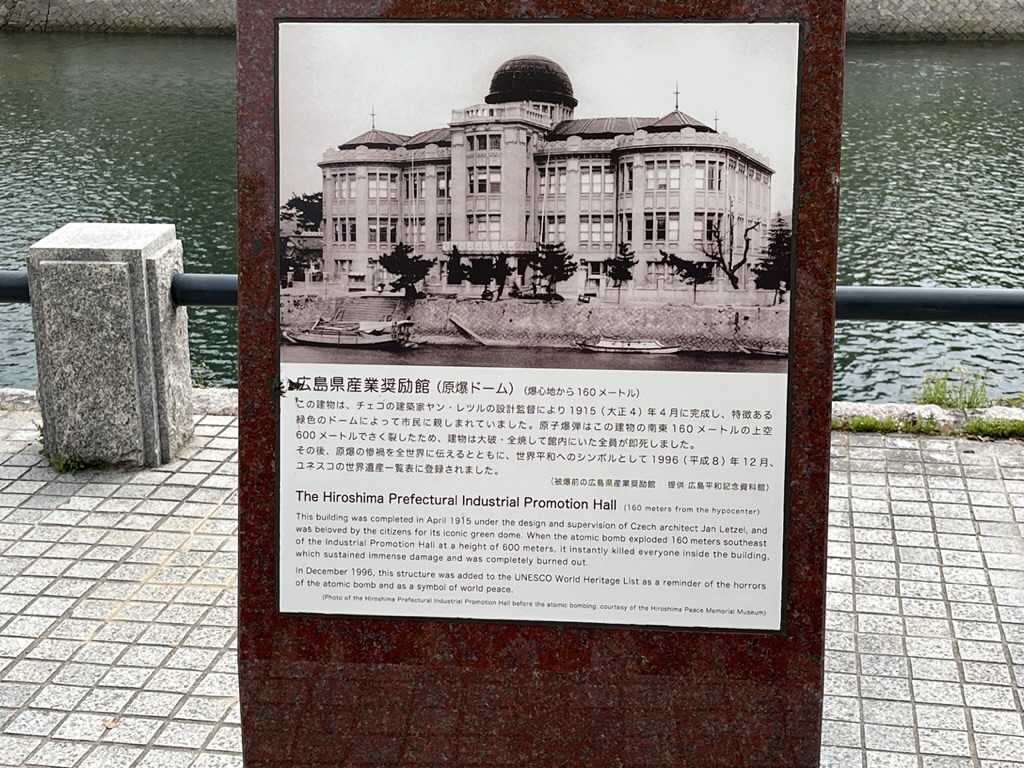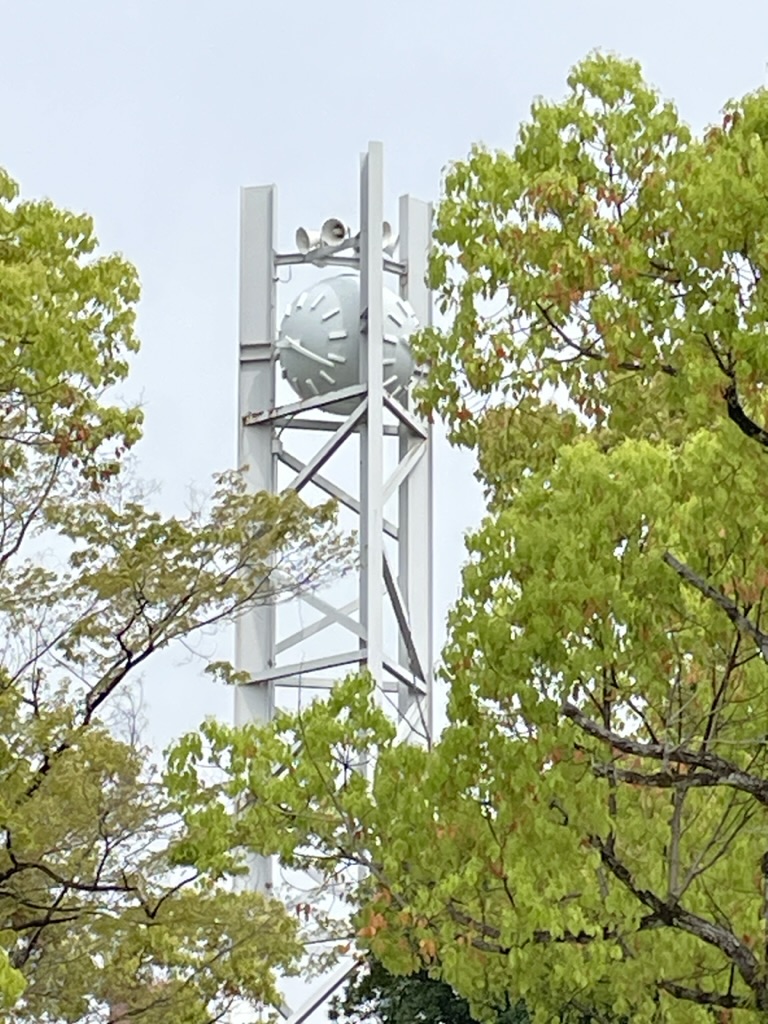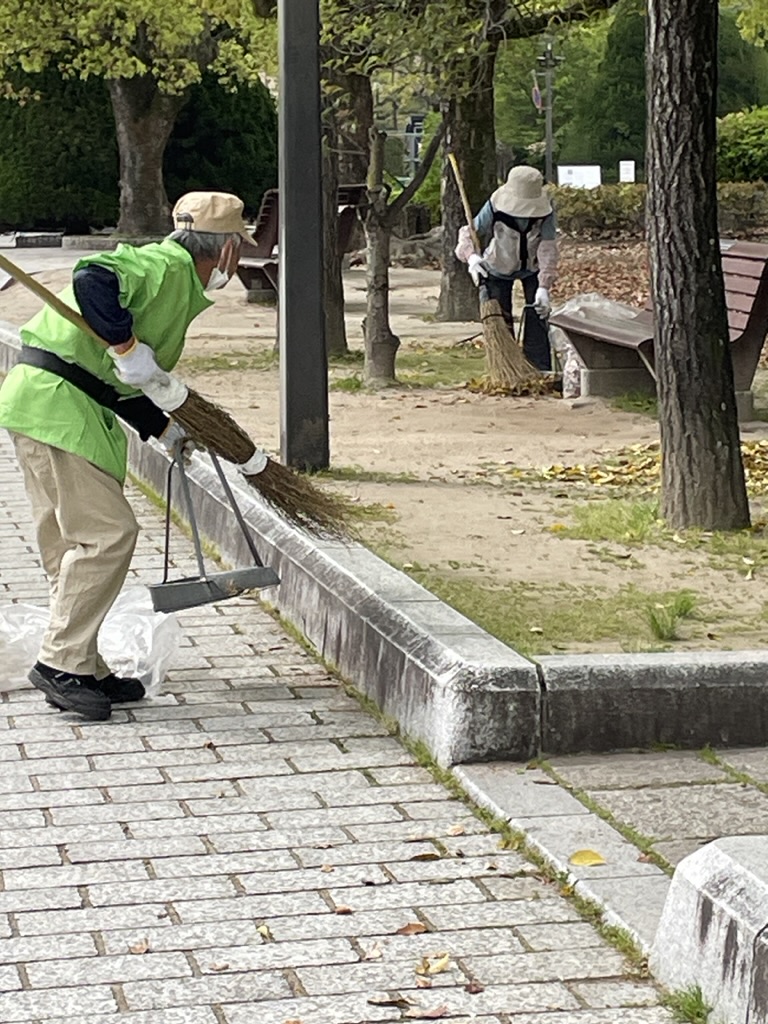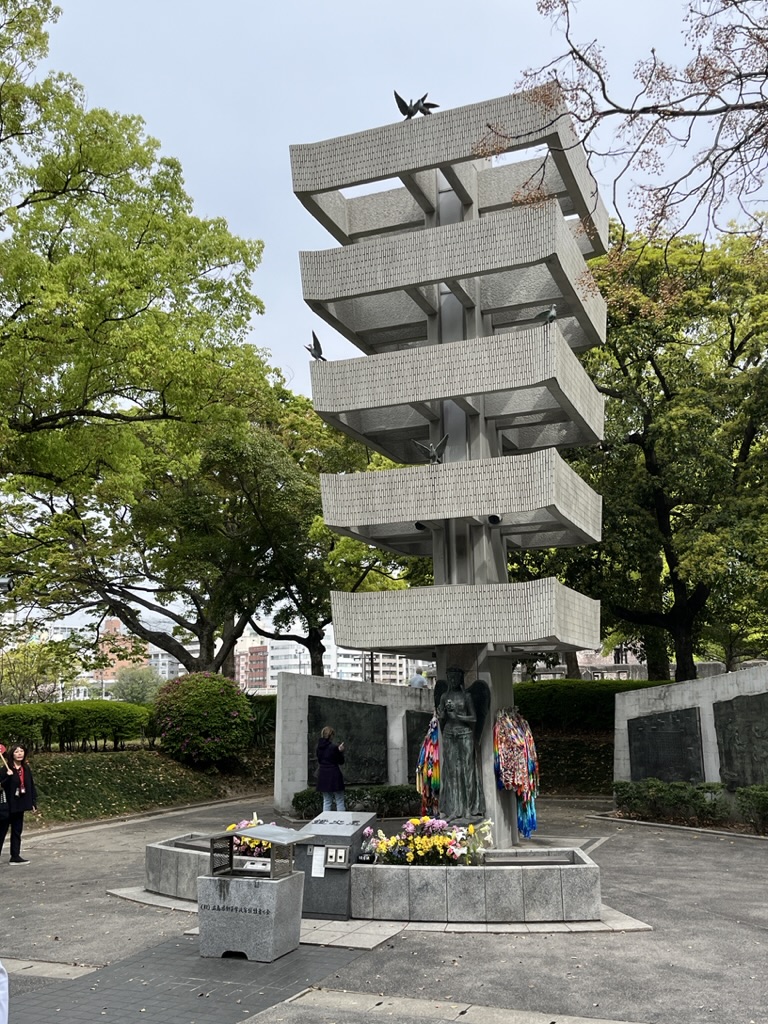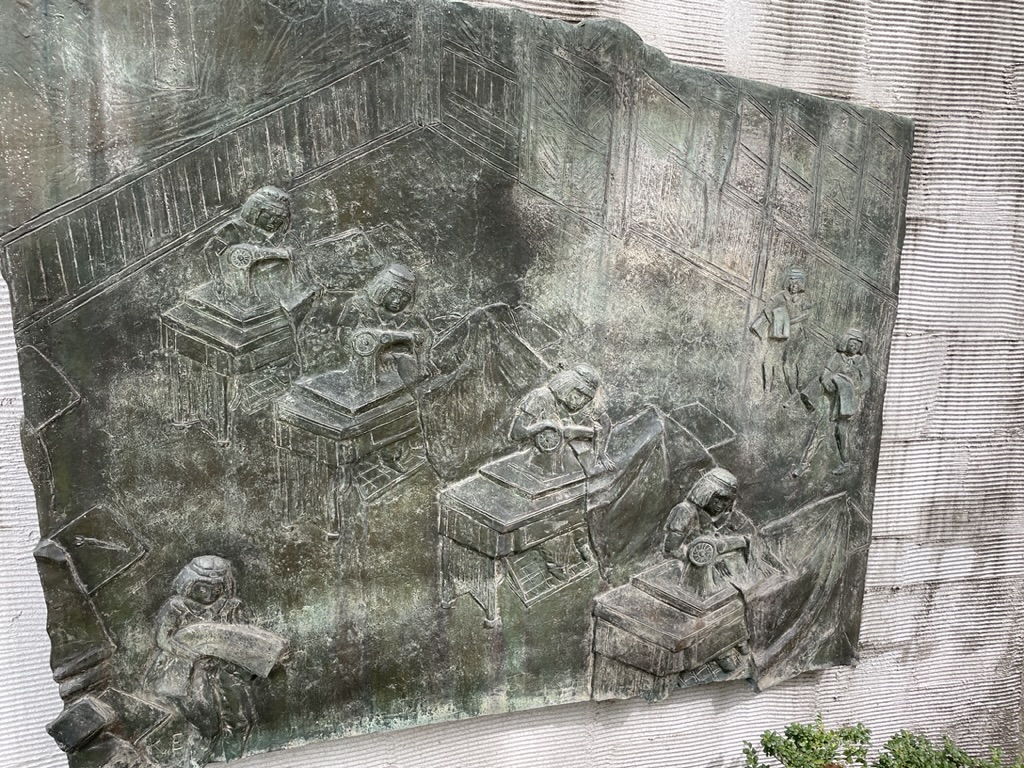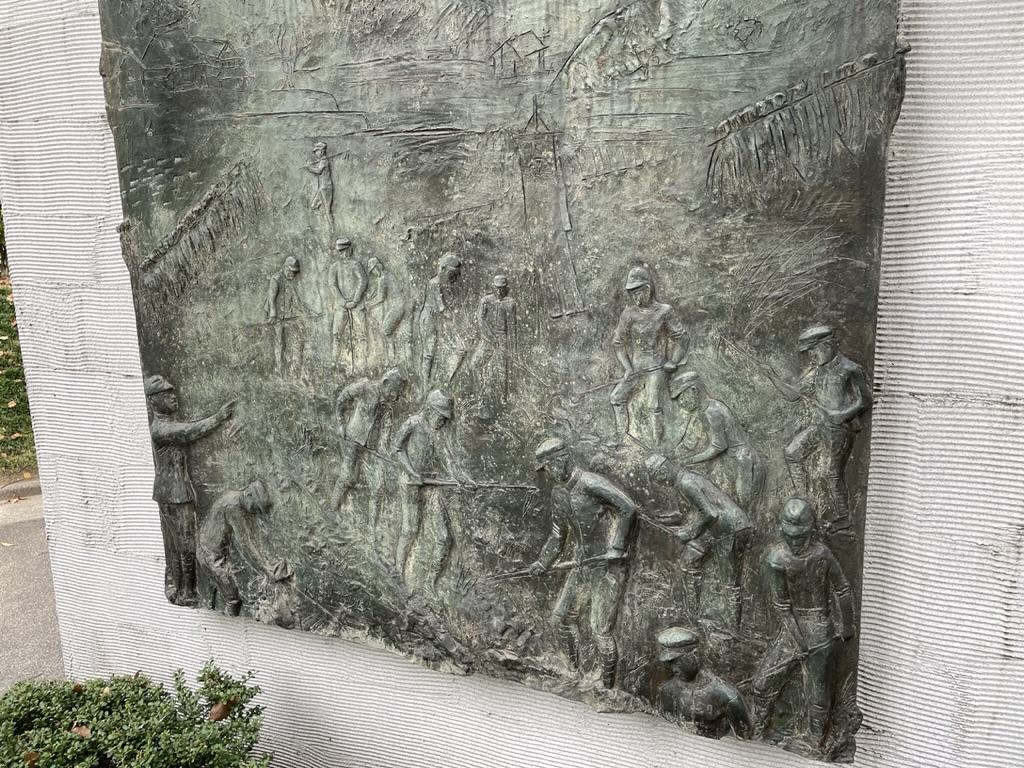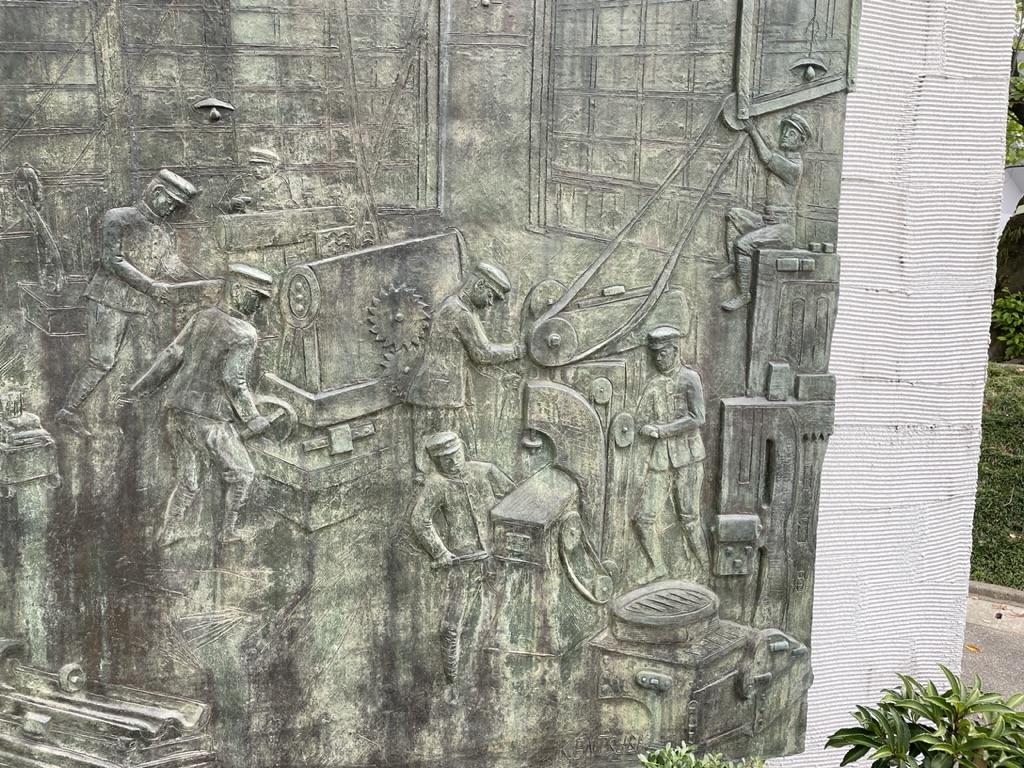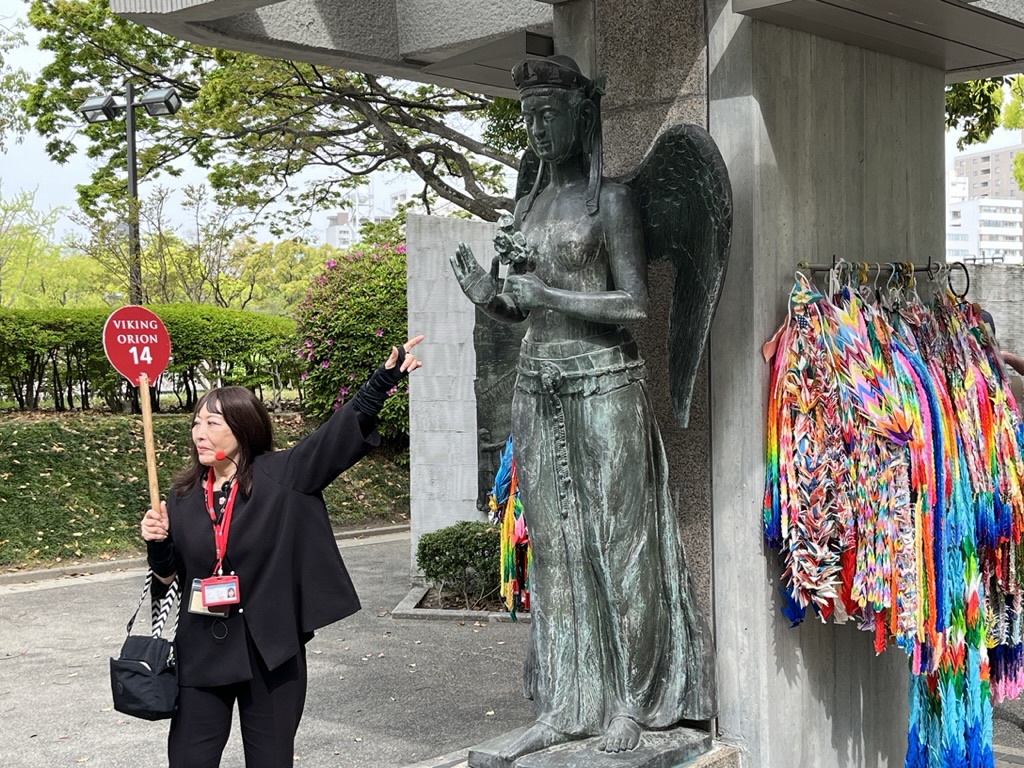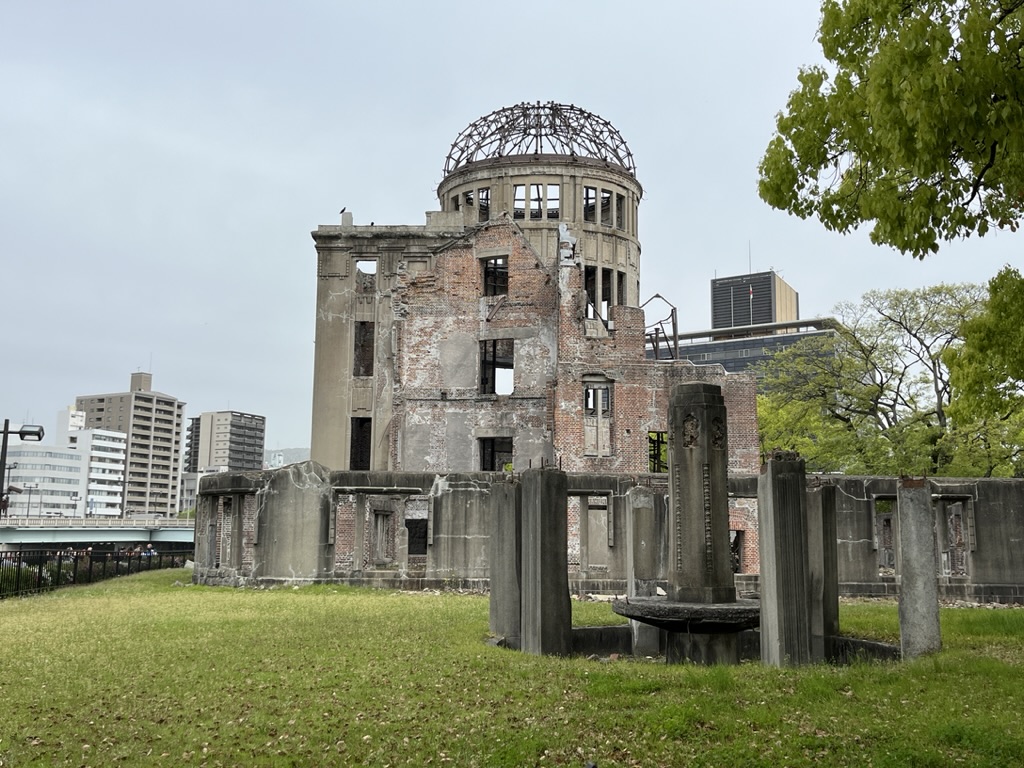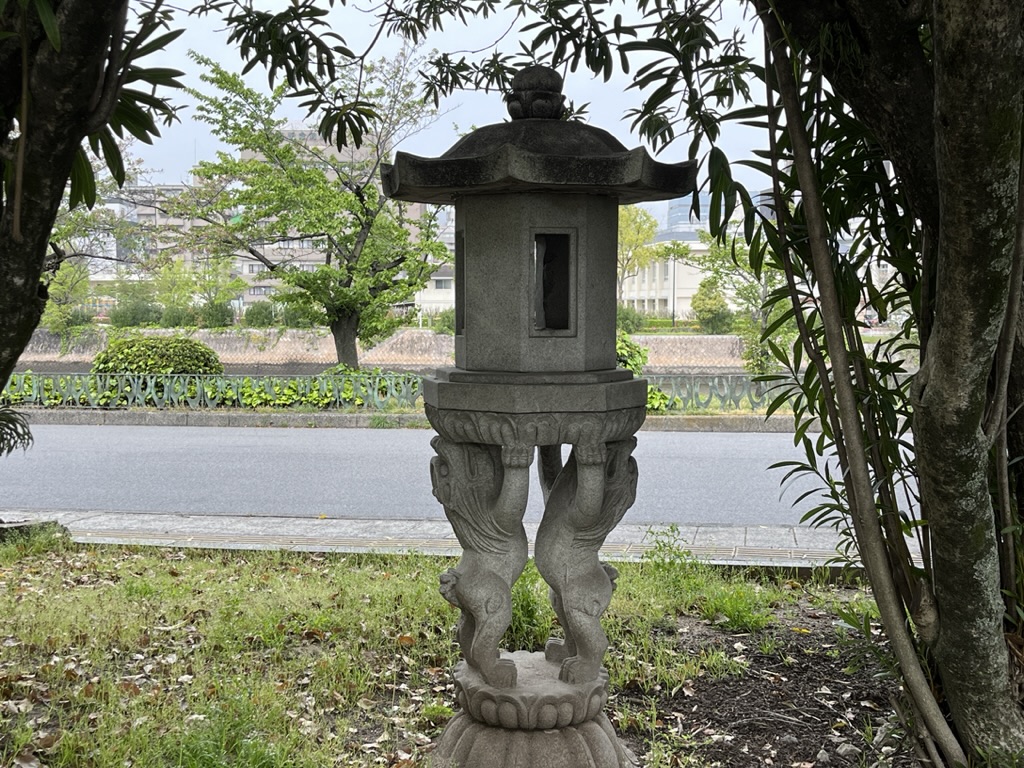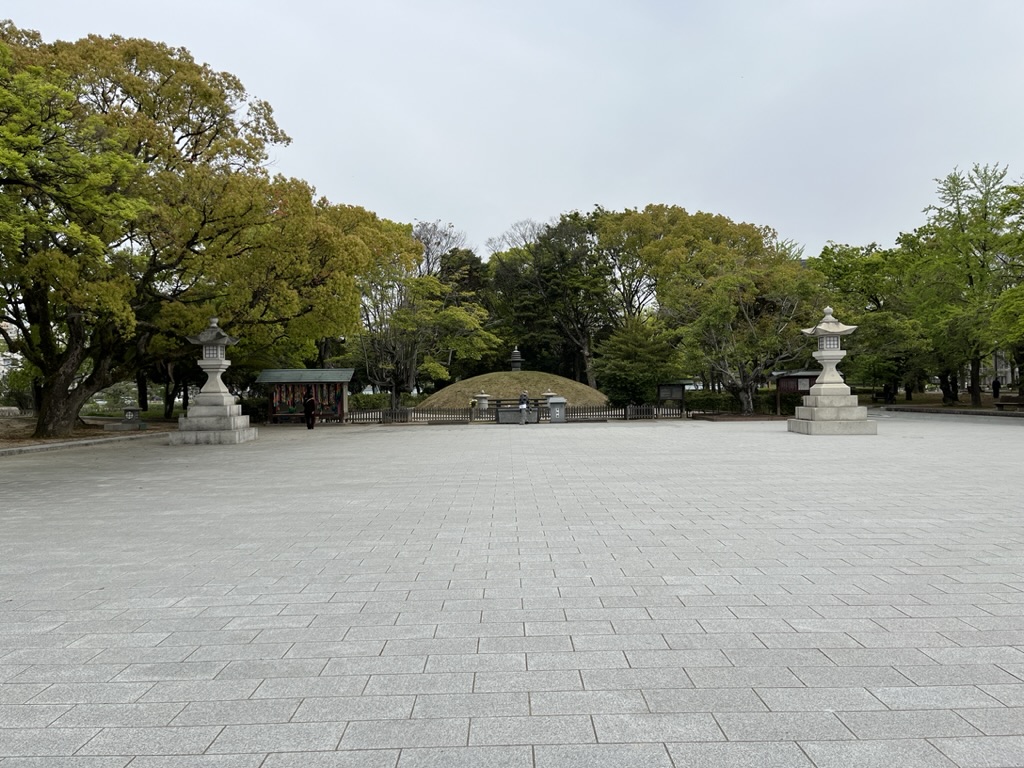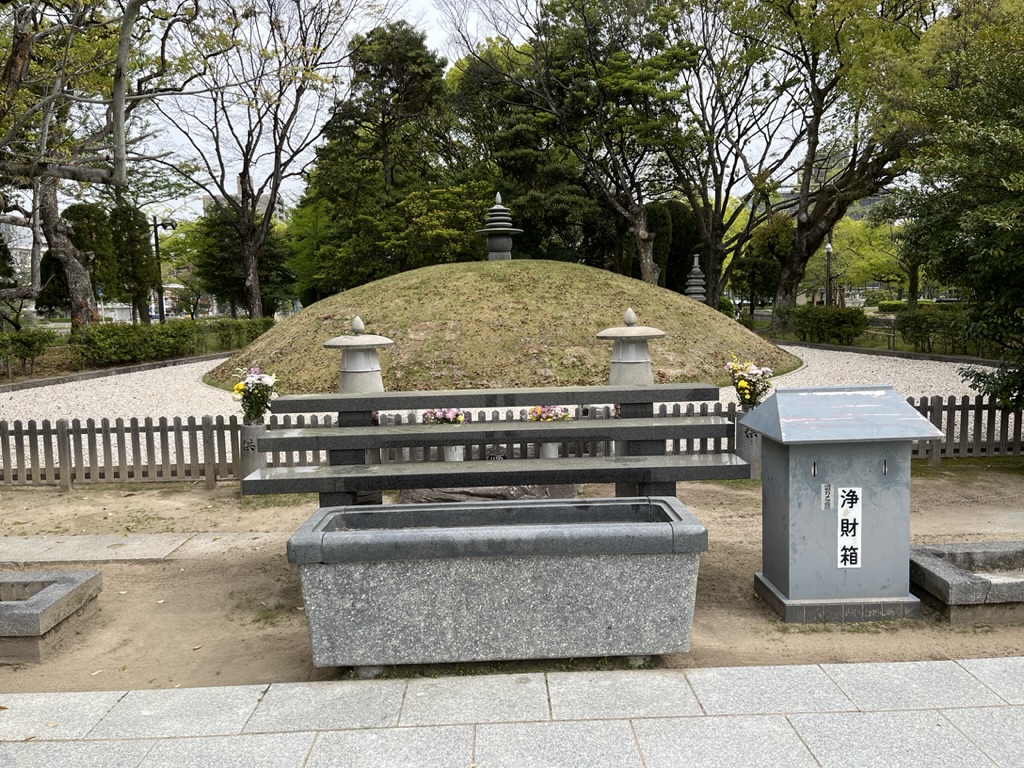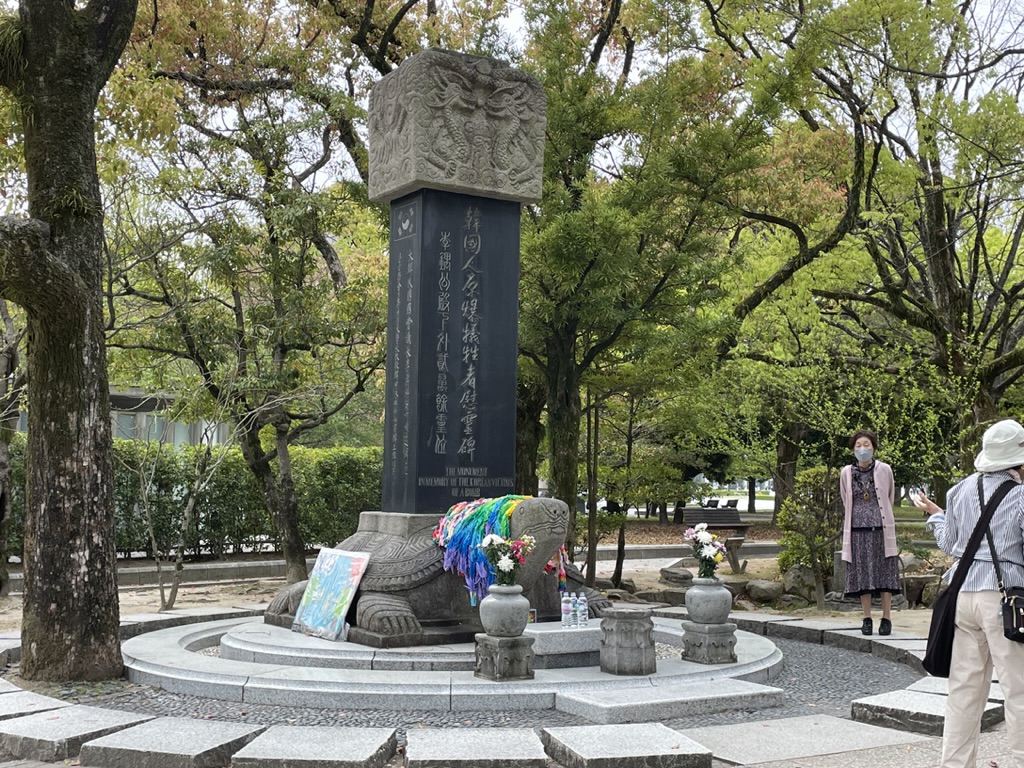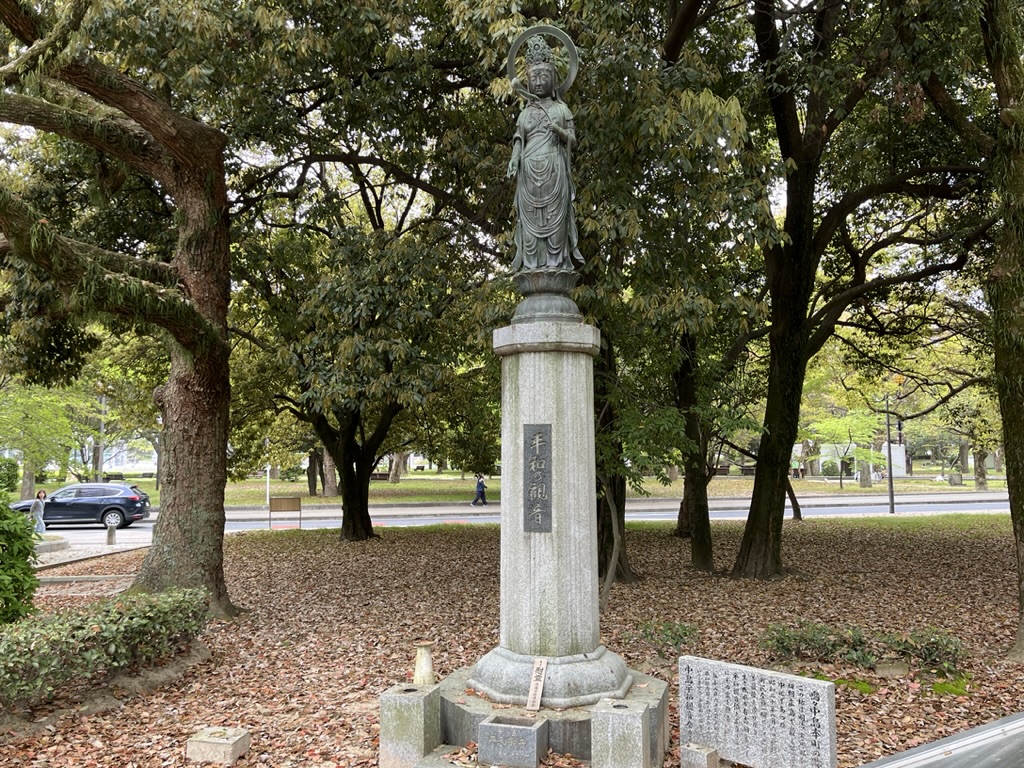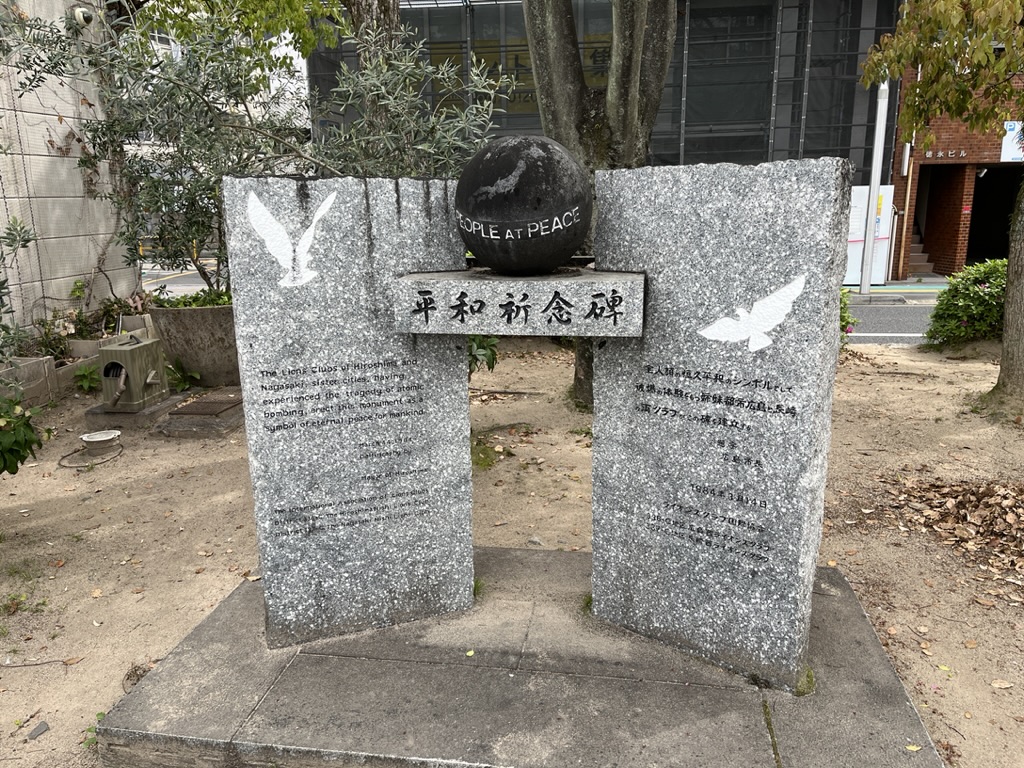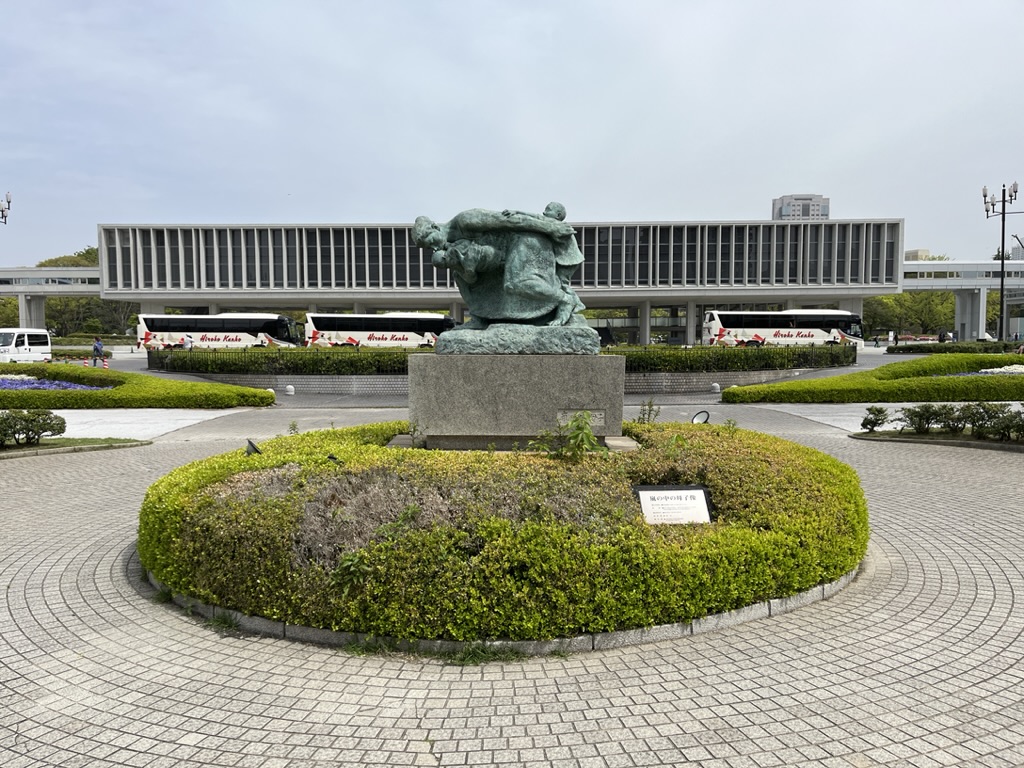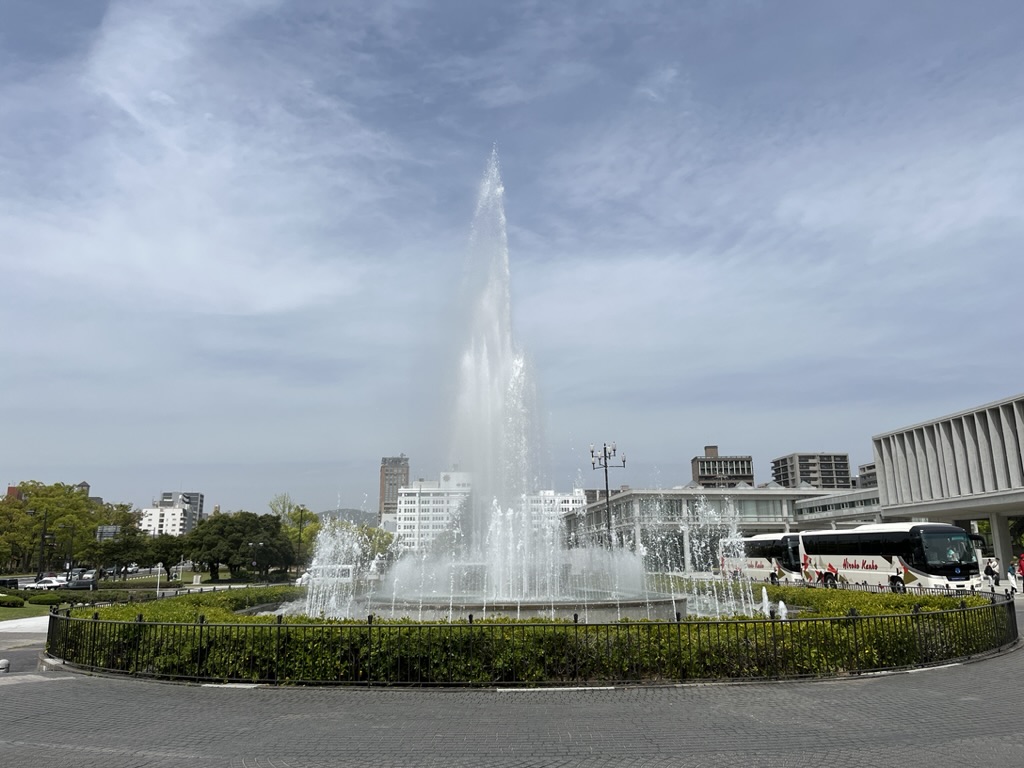Noon Report:
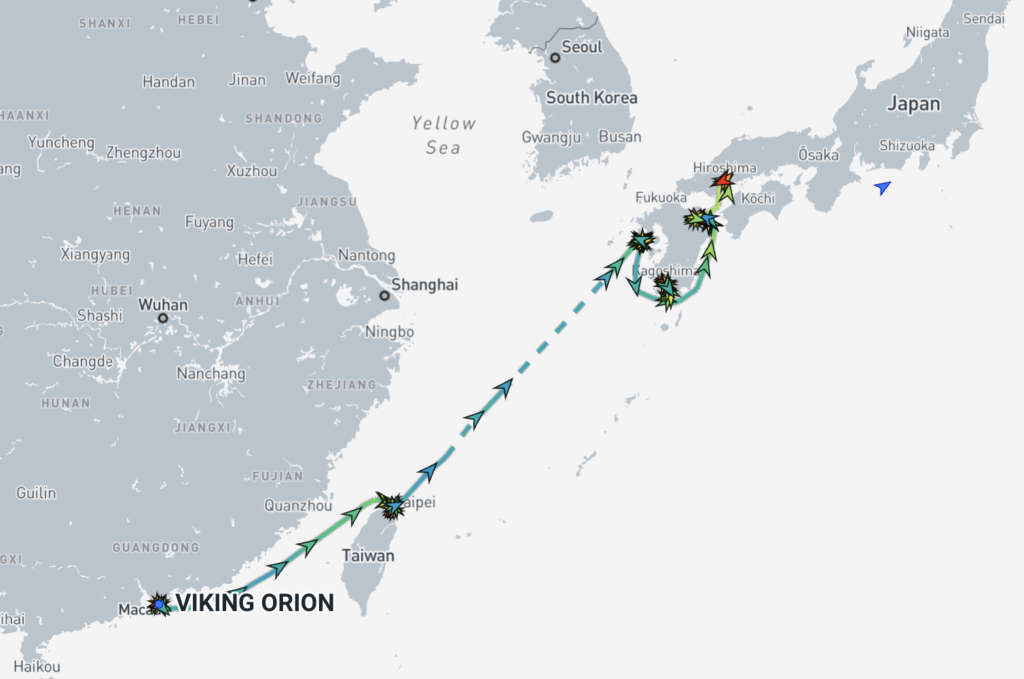
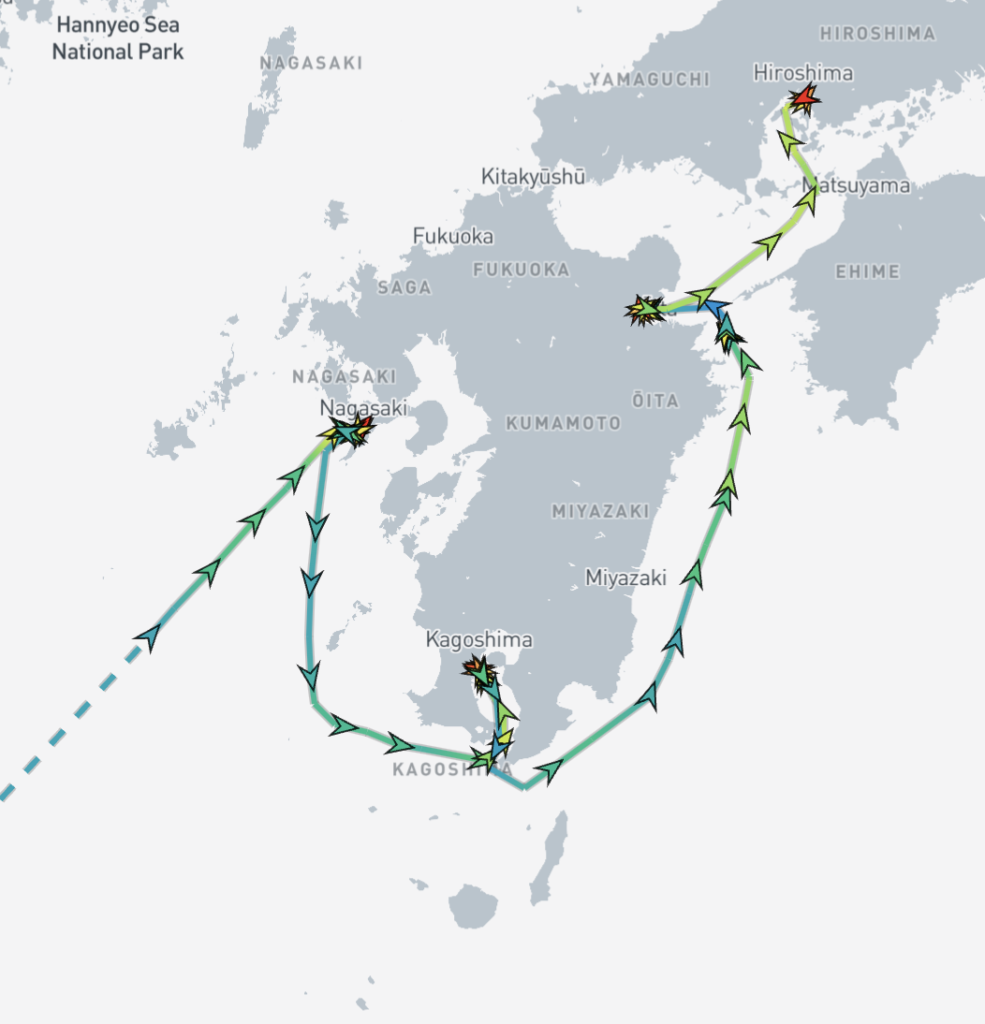
- Location: N 34° 21′ 13.10, E 132° 28′ 22.08
- Speed: Docked
- Course: Docked
- Weather: Partly Cloudy to Sunny
- Sea: Calm
APRIL 17
(We spent 2 days in Hiroshima – which are reported together below)
Out on the deck this morning I spotted a friend resting in the sun. Tradition holds that crickets bring good luck, and though David will tell you this isn’t a cricket I’m claiming the luck anyway.
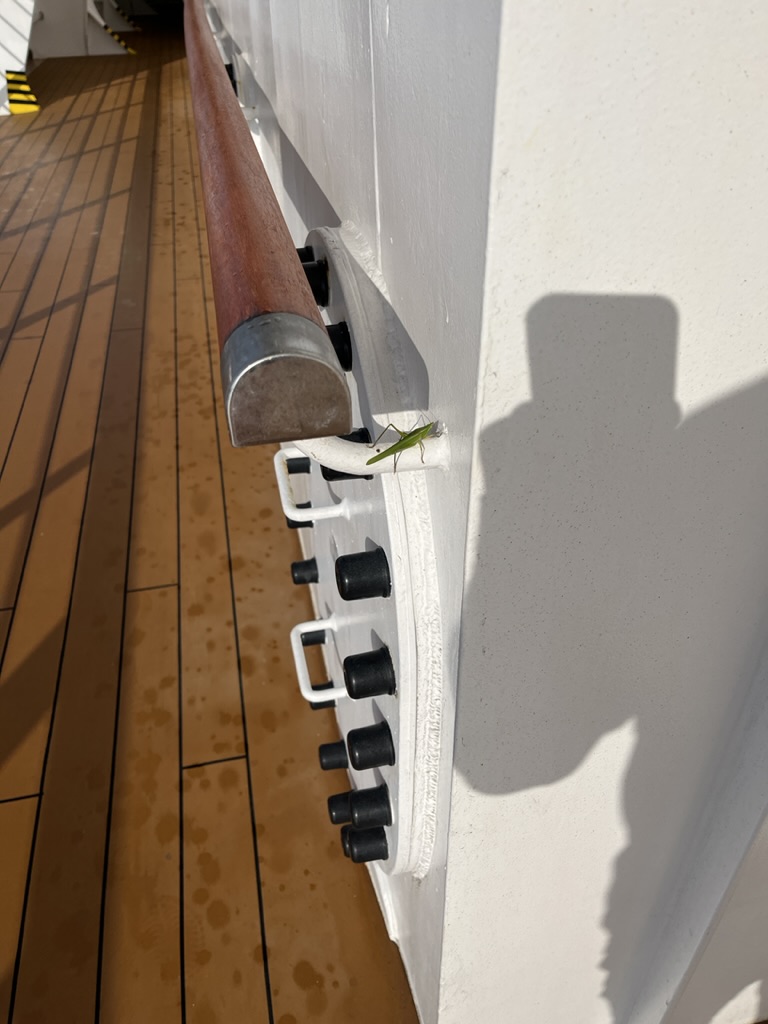
We docked at 8:00 this morning but didn’t have an excursion until this afternoon so following our daily ‘earning the calories’ venture we retired to Mamsen’s to, well, spend a bit of our earnings.
We relaxed there reading, blogging, until lunch. Then it was time to explore.
EXCURSION: Hiroshima Castle & Shukkei-en Garden
Castle
The Hiroshima castle was originally constructed in the 1590s by the feudal lord of the region and destroyed in 1945 (when the Atom bomb was dropped). The main keep was rebuilt in 1958 and serves as a military history museum.
It served the local lord until the Meiji Restoration when it became the Imperial General Headquarters.
During the final days of WW II it was the headquarters of two Japanese divisions stationed there to repel an anticipated Allied invasion.
Garden
Our next stop was the Shukkei-en (Shrunken Scenery Park) Garden. Originally designed in 1620 for the local feudal lord, the gardens were renovated in the late 18th century.
We were given a wonderfully generous amount of time to wander the garden and enjoy its beauty and tranquility.
Arriving back at the ship we were welcomed with a glass of bubbly and a greeting by members of the ship’s crew.
DINNER
Dinner this evening was the delayed get together with Steve & Karyn, Randy & Kelly. We met at Manfredi’s Italian Restaurant. One of the two “specialty dining” restaurants on board, Manfredi’s is named for Torsten Hagen’s good friend, Manfredi Lefebvre (Chairman of Silver Sea). We had a great time catching up and talking about future trips (and ate a bit of good food too).
DESTINATION PERFORMANCE
Following dinner we headed to the Star Theatre for the evening’s performance of Kagura which is “…a traditional performing art that celebrates and expresses gratitude for the bounties of nature.” What we saw was loosely related to ancient tradition but it was still extremely engaging (This one was about a Samurai hero who kills the dragons that are eating the local princesses.). Here are a few photos. Once I have returned to the land of reliable internet I will post some video clips.
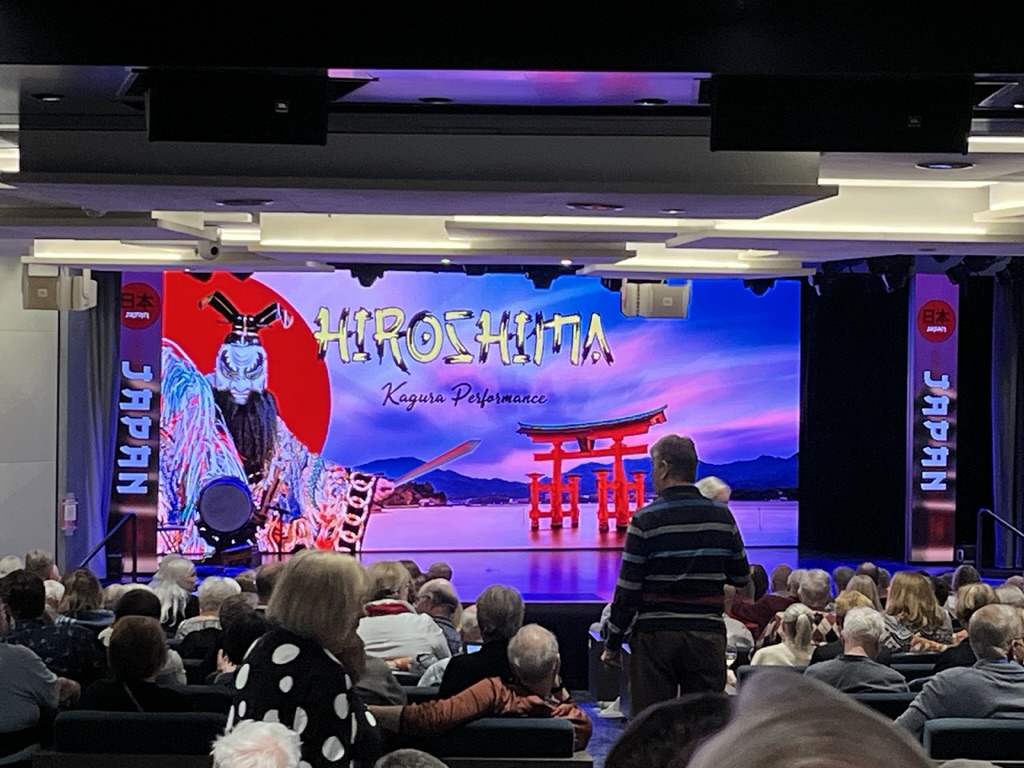
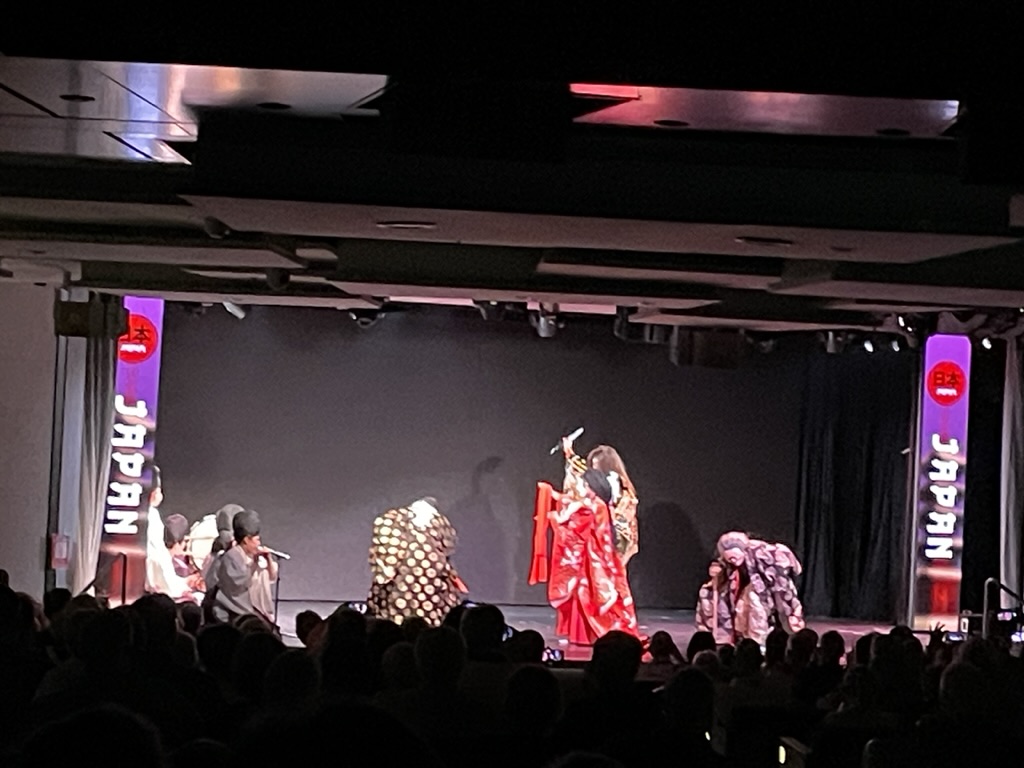
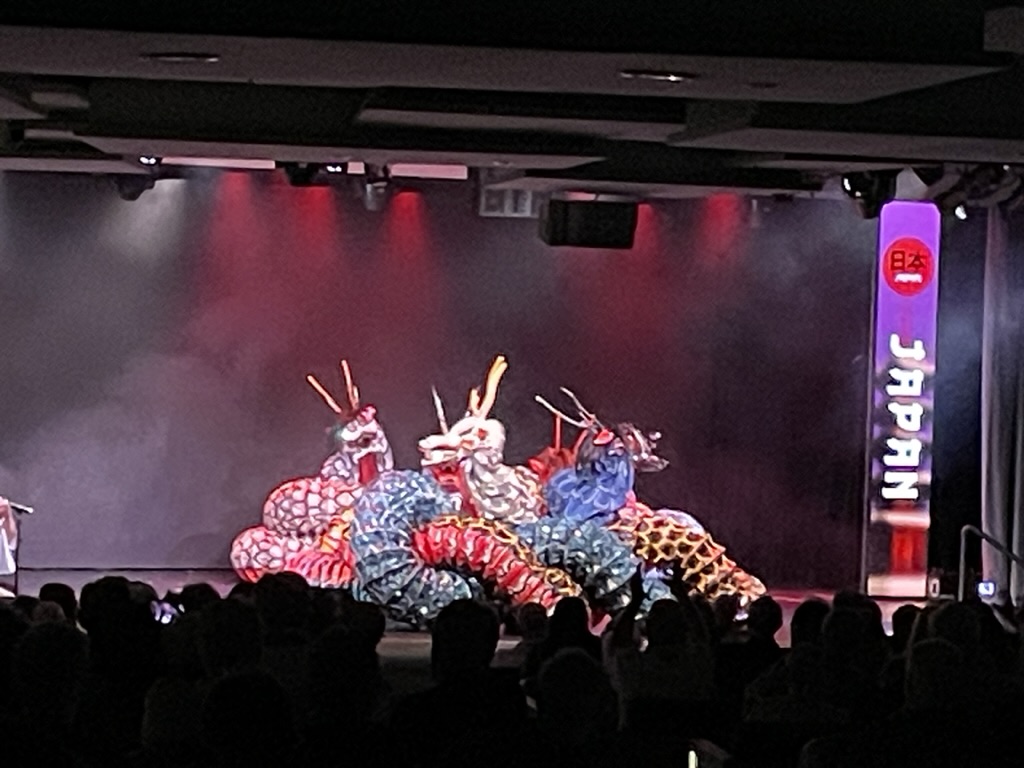
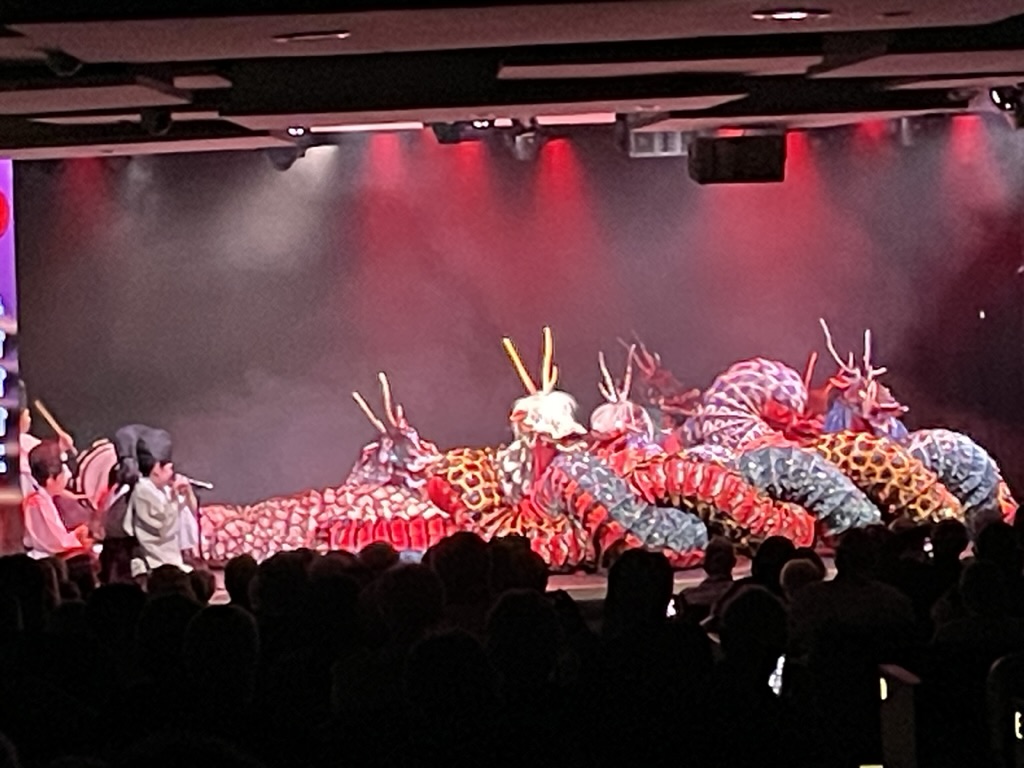
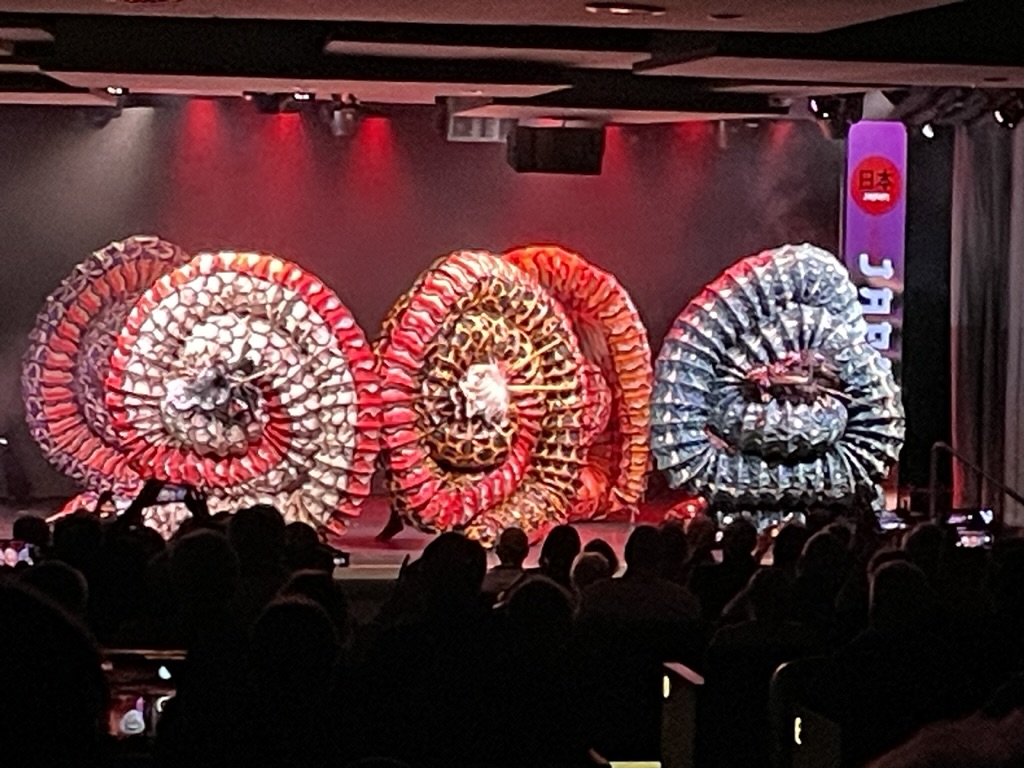
APRIL 18
We didn’t leave port until noon today so we had the opportunity to take in one more excursion.
EXCURSION: Postcards of Hiroshima
This excursion was a visit to the Hiroshima Peace Park with a couple of hours to experience various aspects of the site of the first city to have an atomic bomb dropped on them.
We had time before our bus left to wander a bit beyond the park – into the vibrant modern city that has grown up from the ashes of tragedy.
As we were waving our arms about trying to decide which way we wanted to go next, a nice young lady passing by stopped and asked if she could help us. She was delighted to learn we were from Idaho as she had been an exchange student in Twin Falls 15 years ago!
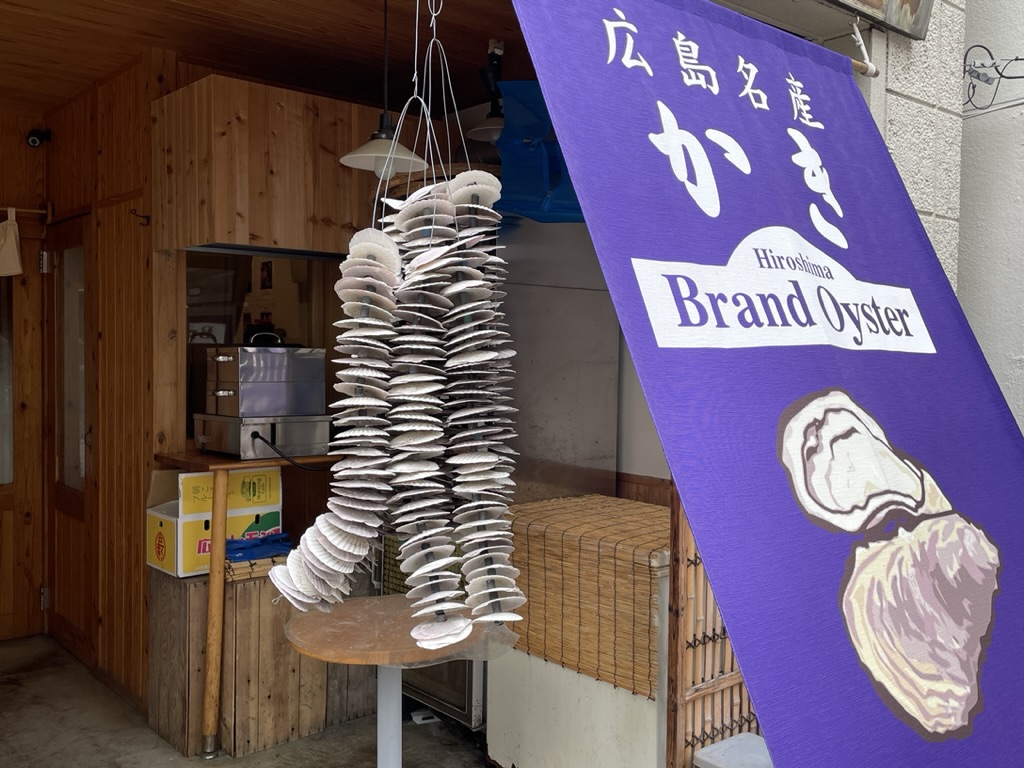
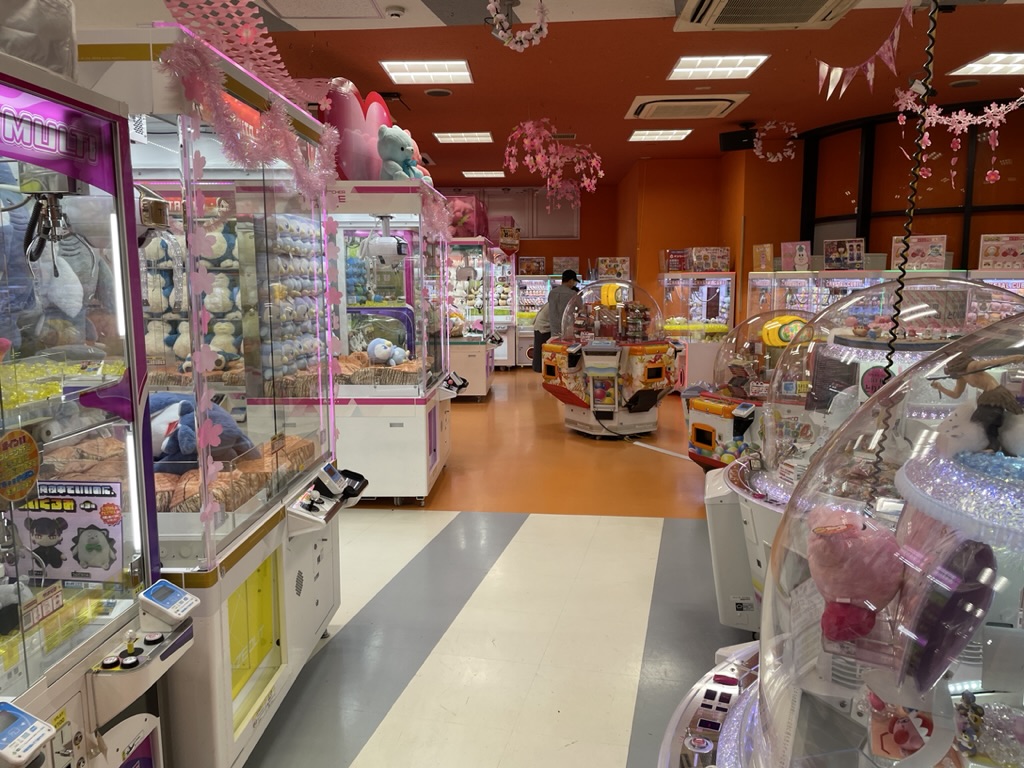
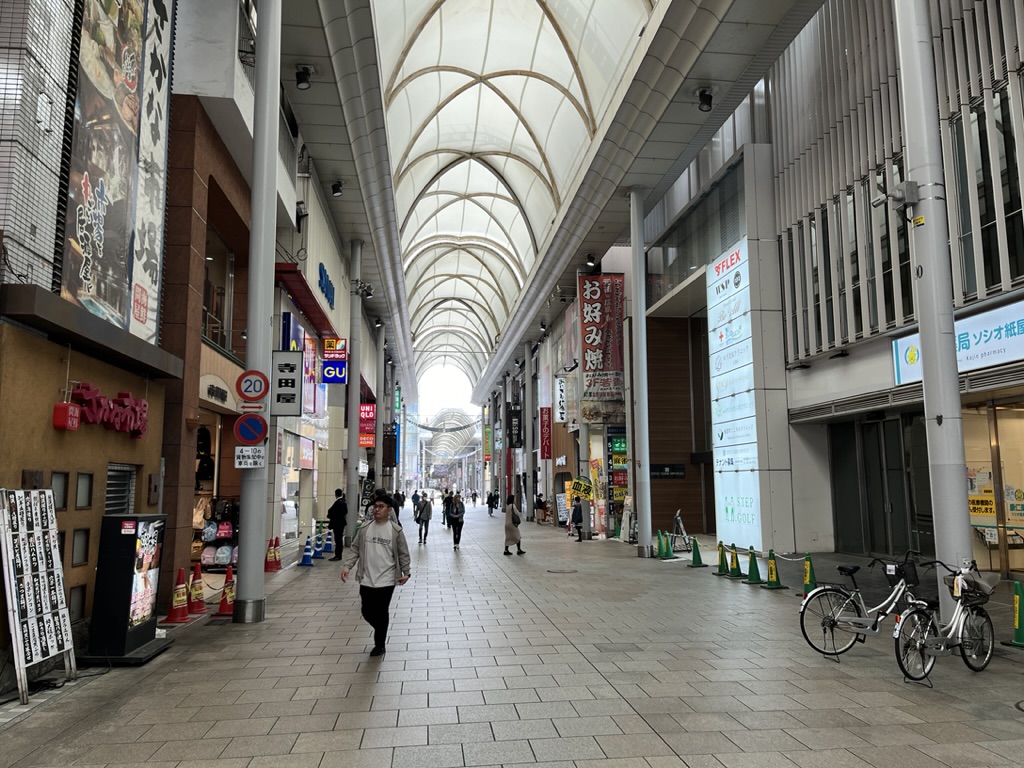
On the way back to the ship we passed near the only building left standing following the bomb (it was made of brick while the other buildings and houses were just wood and paper which the resulting fire storm destroyed.
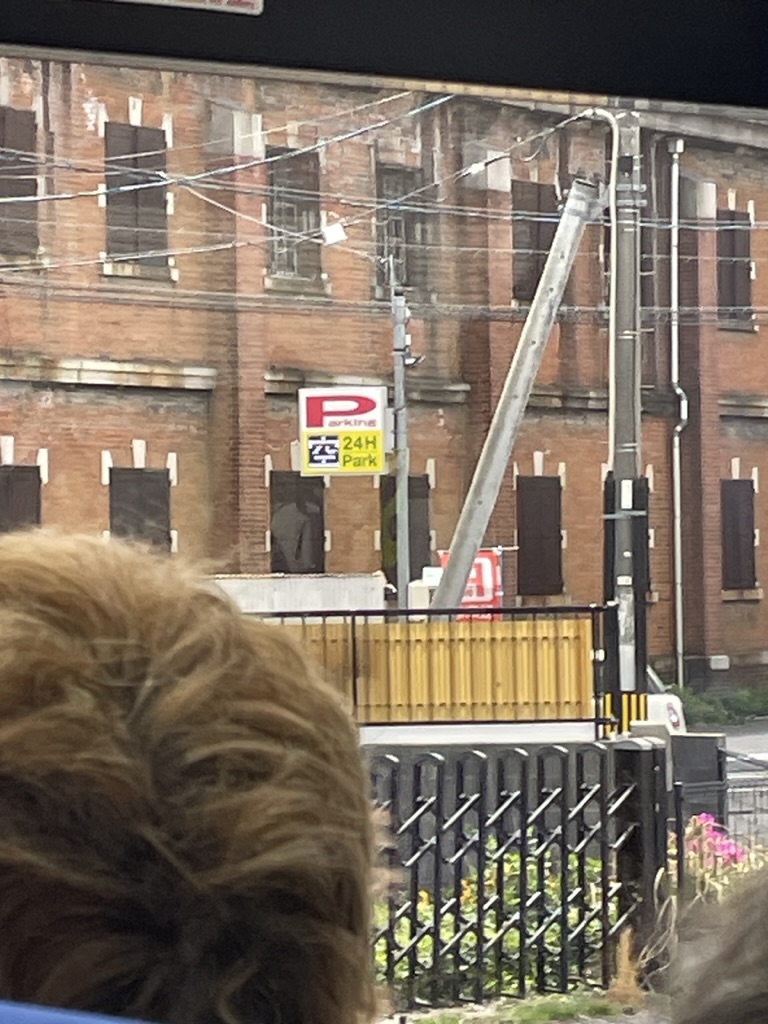
Back on board we lunched, missed the noon trivia, and made it to the port talk on Kobe (tomorrow) and the lecture on extraterrestrial life.
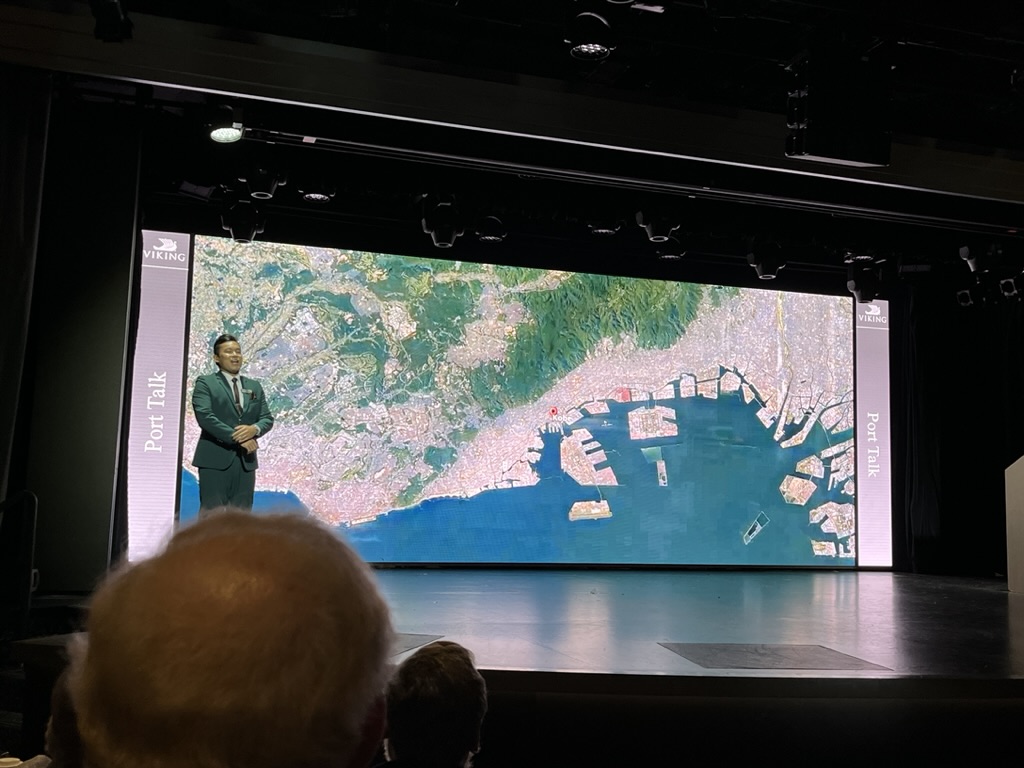
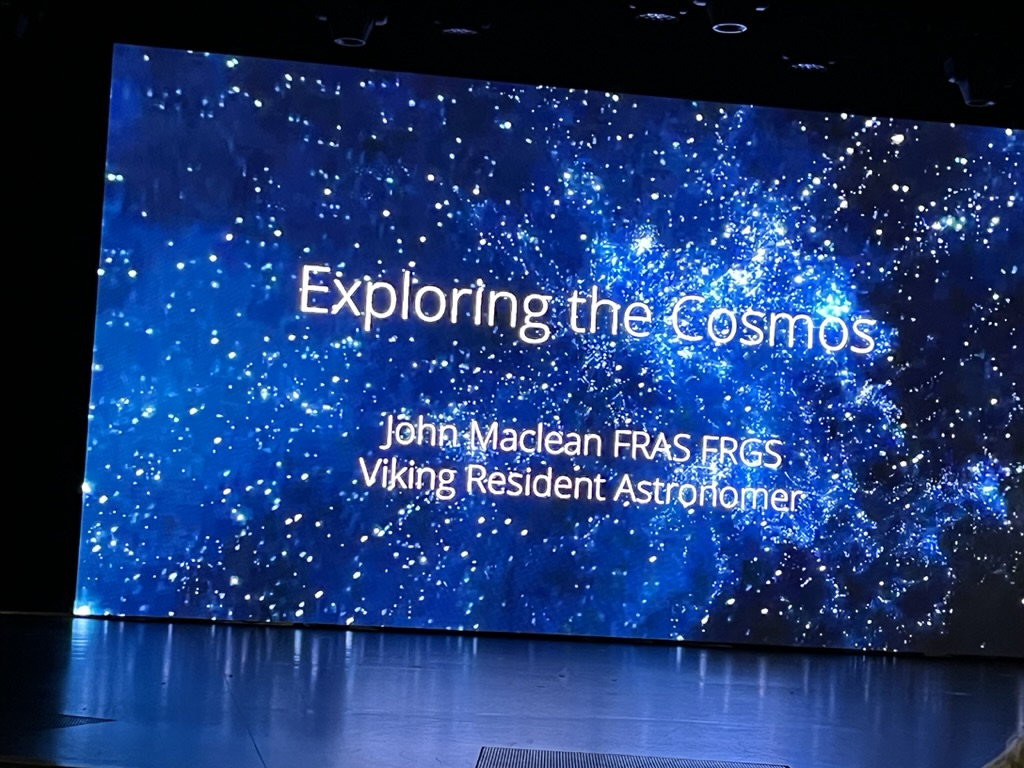
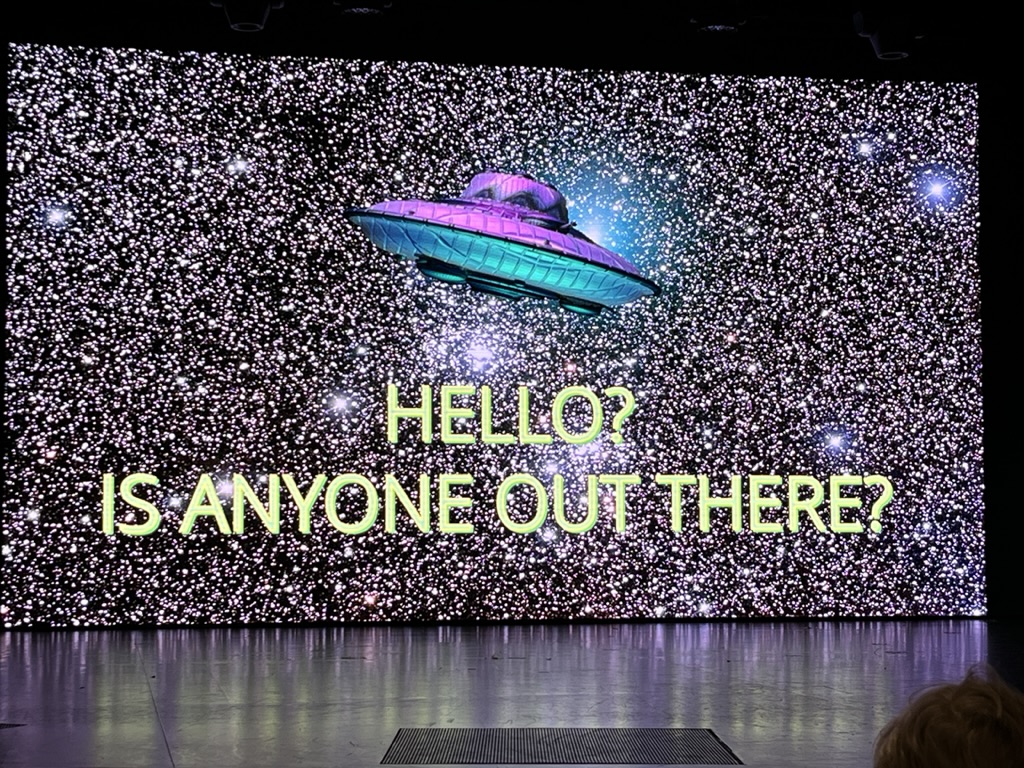
Then it was dinner and back to the room to work on the Blog. There apparently was a 6.3 earthquake last night but we didn’t feel it on the ship. Tomorrow is a very long day in Kobe (9 hour tour to Kyoto). So we’re early for bed.
Nite all,
R
Cheryl’s Factoids:
- On August 6, 1945, the US dropped a nuclear bomb on a city for the first time. Hiroshima was a military headquarters at that time – the explosion’s shock wave with a temperature over 10,000 degrees Fahrenheit instantly killed most of the residents and all the wood and paper buildings were destroyed in the resulting city-wide firestorm. Bodies clogged the 5 rivers surrounding the city and most of the survivors were badly burned or died from radiation poisoning – one thing they needed most was water so all of the peace memorials we have visited have many flowing water features.
- The skeletal remains of the bombed building with a dome was once the Hiroshima Prefectural Industrial Promotion Hall – a cement and iron bar constructed building. It has been left as it was in memory of the casualties. This year is the 79th year since the bomb was dropped and Japan is planning a special ceremony for next year’s 80th anniversary.
- The Eternal Flame will never be extinguished until all the nuclear weapons are destroyed.
- The Children’s Peace Memorial is a child holding up an origami crane (which now stands for Peace). This is based on the true story of Sadako Sasaki who was 2 years old when the bomb was dropped. Later in life she developed leukemia, spent a long time in the hospital, and died when she was 12. She is known for folding over 1,000 paper cranes in response to a Japanese legend that a crane lives for 1,000 years and if you fold 1,000 origami cranes within one year you may get your wish for good health. The memorial is dedicated to the memory of the children who died as a result of the bomb and every year on Obon day people leave Peace cranes at the statue in memory of the departed spirits of their ancestors.
- The memorial for Mobilized Students is in memory of all the students between 12 and 15 who were put to work in the fields and factories since so many of the adults had died or were gone fighting in the war.
- The Peace Clock Tower – a chime rings EVERY DAY at 8:15, which is the time the pocket watches stopped when the bomb hit.
- The Memorial Bell is a bell under a cement arched dome. The bell is inscribed with the nations of the earth and the dome represents the universe surrounding the earth. When the striker log hits the bell the shock wave resounds throughout the earth.
- There is only one tree that survived the bomb – the rest were flattened or killed by radiation.
- The statue of the goddess at the Mobilized Students Memorial is holding an oleander blossom – the first flower to bloom after the bombing and the symbol of the city.
- I found the Korean monument very moving (the turtle at the base of their monument – like the crane and the dragon, is considered to be a very long lived and sacred creature): When the atomic bomb was dropped more than 10 percent of those killed were Korean. “They were given no funerals or memorial services and their spirits hovered for years unable to pass on to heaven….This monument was erected in 1970 in the hope that the souls…brought to misery through force will be able to rest in peace. It is also an expression … that the A-bomb tragedy will never be repeated”.
- Hiroshima has many names. My favorite is “The Phoenix City” – the city that arose from its ashes. After the end of WWII and all the rubble was cleared away, the mayor had a vision of a modern city. He insisted that a huge boulevard (2 traffic lanes each way plus a divider full of trees and flowers) be built as the primary road through the city. All the new buildings were built of reinforced steel and concrete – skyscrapers line the avenues.
